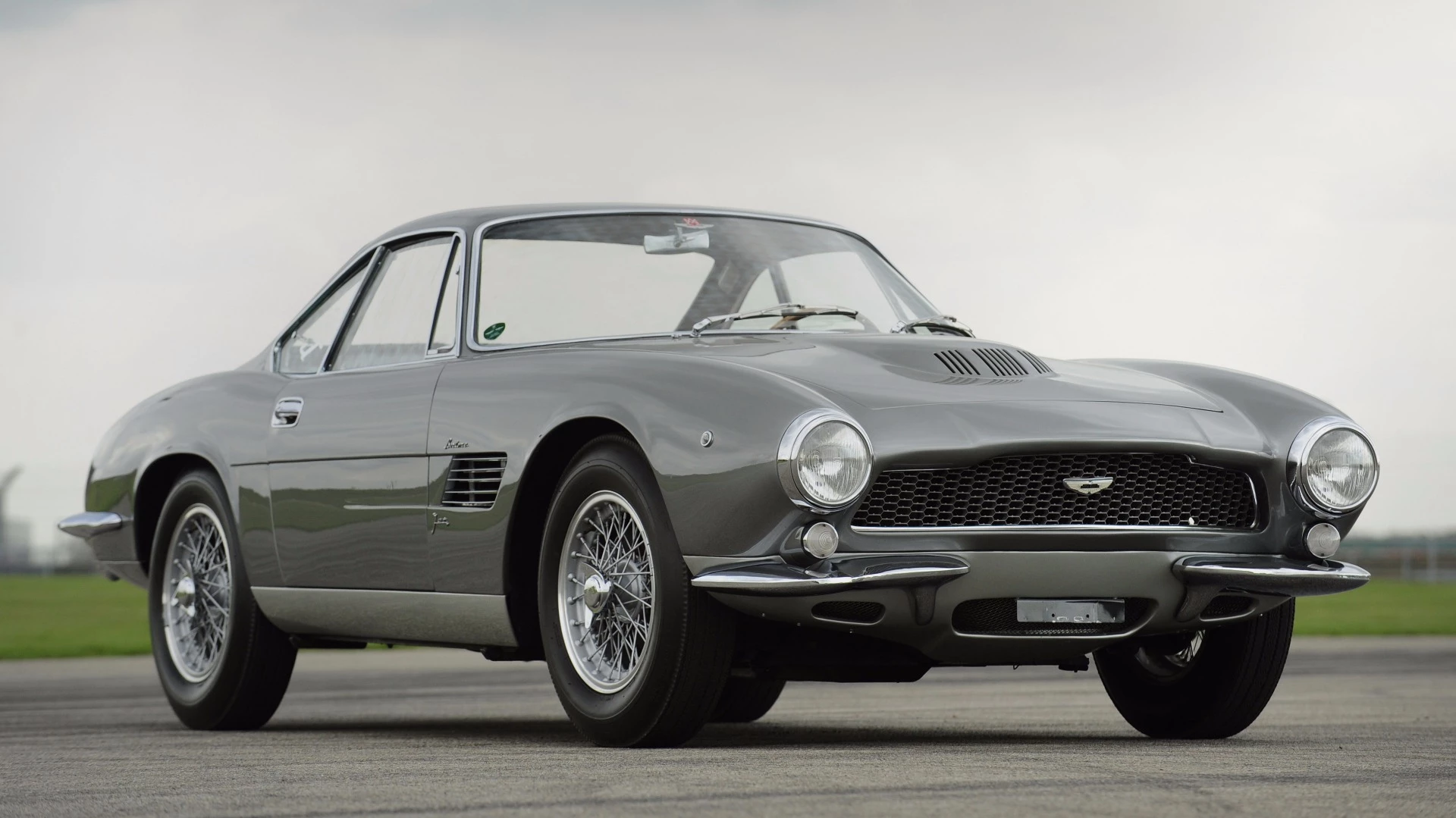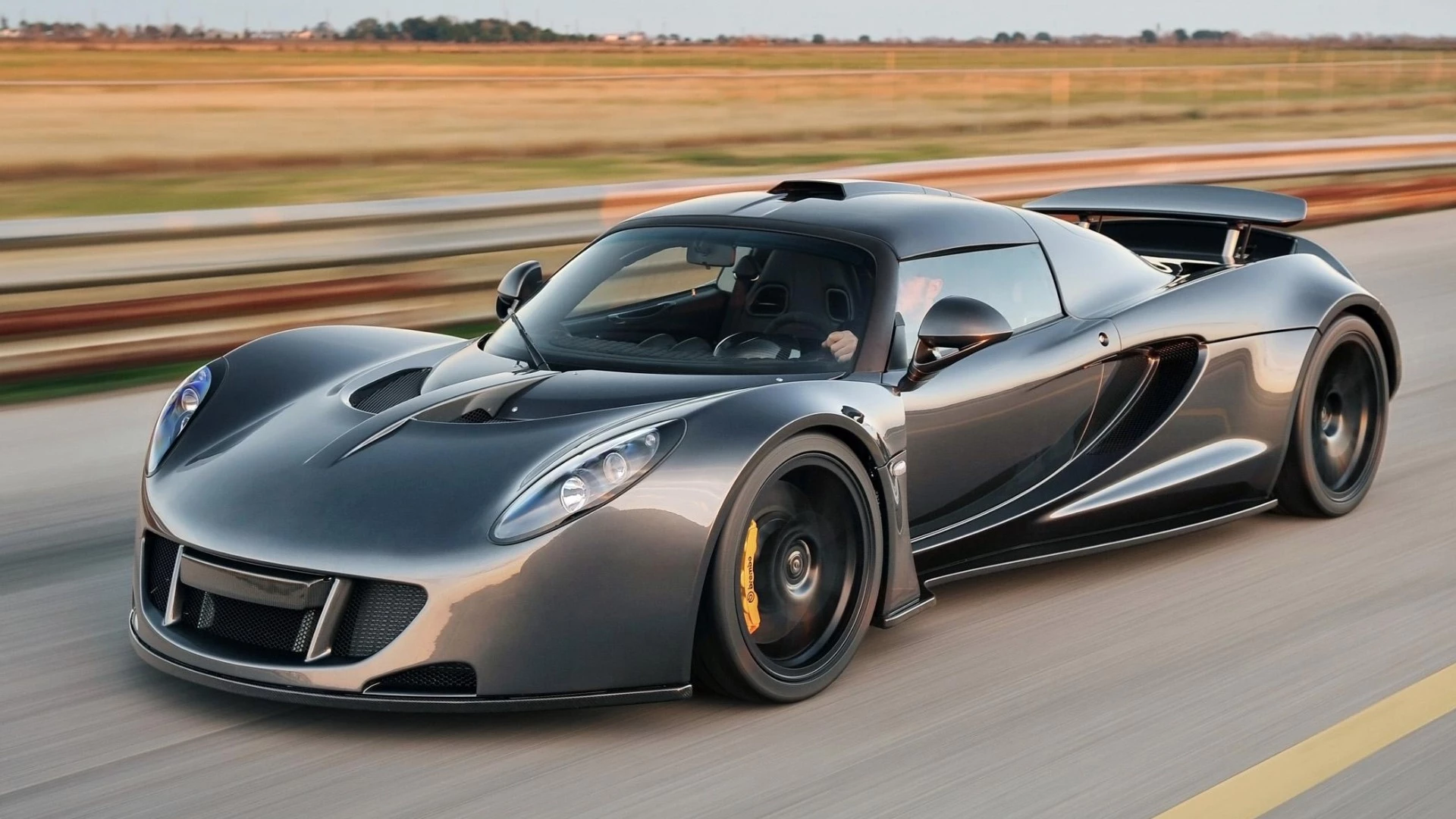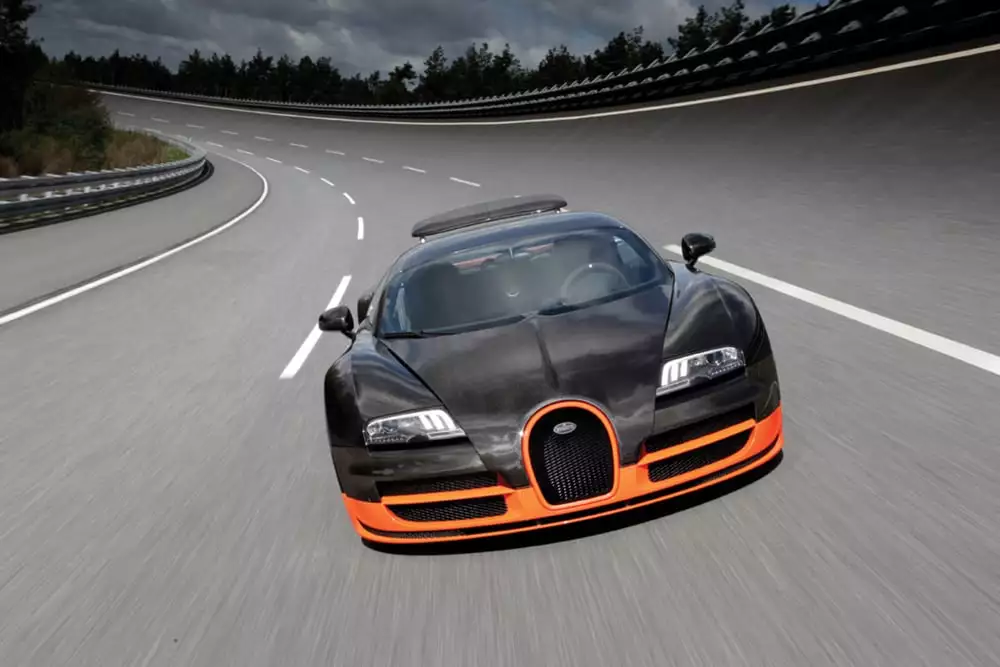Updated February 5, 2018: There's only one fastest car in the world at any given time, and the car that holds that title has captured the public's imagination since the first flurry of speed record attempts in the early 1900s. Here's a detailed look at the last seven decades of the world's fastest production cars – from 1946 until now.
We elected to use WW2 as the break in the history because not enough reliable data is available prior to WW2 to make definitive statements about performance. We'll chart the first 50 years of automotive history from 1894 through to WW2 in upcoming articles, but because of these constraints the tone will be slightly different.
The most recent 70 years is the easiest period to cover, because the technology quickly evolved following WW2 to accurately record times, and the most recent part of this story is well documented through our 15 year archives. Just the same, we added in a few likely contenders in the post-war period which were arguably, depending on the rules you wish to apply, among the fastest production cars of their day. The lack of a suitable authority is also an issue, because it seems that there are few manufacturers who aren't prepared to fudge the rules just a bit to claim the prize.
All of the above adds up to some confusing anomalies in the list as you can see in the chart below, but for the sake of thoroughness – and because we love a good argument – we've included all of the cars we consider contenders.
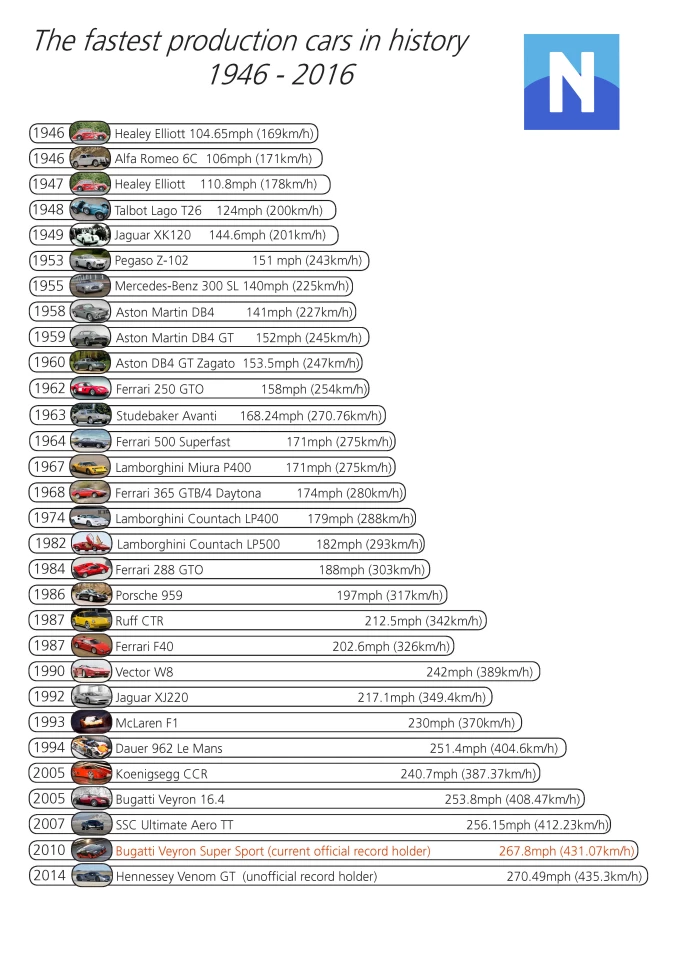
The first successful speed record attempt for a production car after WW2 was made by the two-door Healey Elliott in 1946. Achieving a top speed of 104.65 mph, it became the first car to hold the mantle in the new era – a mantle that has been passed progressively upward since the first production automobile rolled off the line in 1894 with a top speed of just 12 mph (19 km/h).
1946 | Healey Elliott | 104.65 mph (169 km/h)
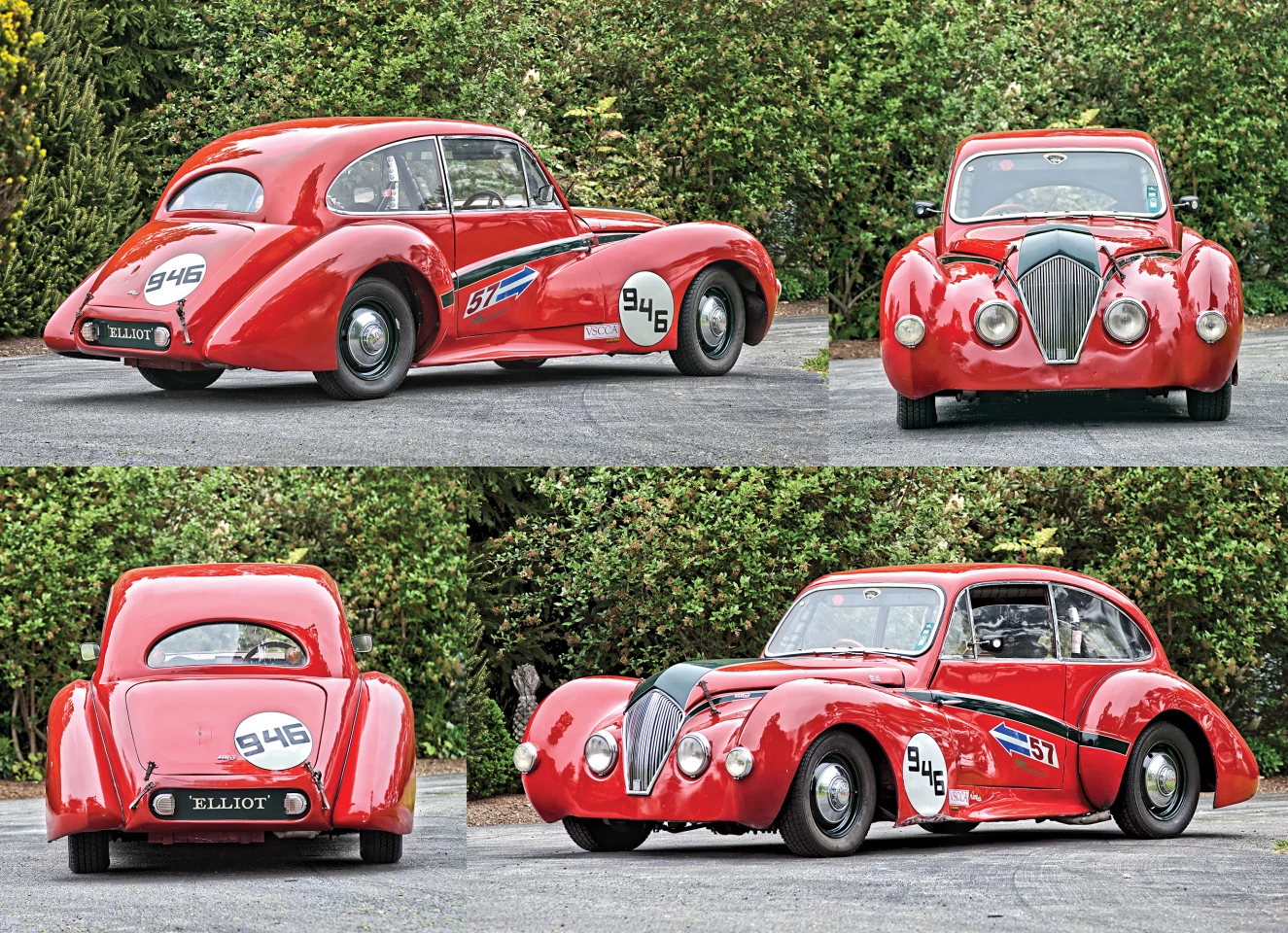
Noted British designer, driver and entrepreneur Donald Healey took his latest design – the Healey Elliott 2.4 liter to Italy in December 1946 where in testing by The Motor magazine, it recorded 104.65 mph over a flying quarter mile and was subsequently claimed it to be the fastest closed production car in the world. Marqueart has the full story on the Healey Elliott including magazine and newspaper clippings of the attempts.
1946 | Alfa Romeo 6C 2500 Super Sport | 106 mph (171 km/h)
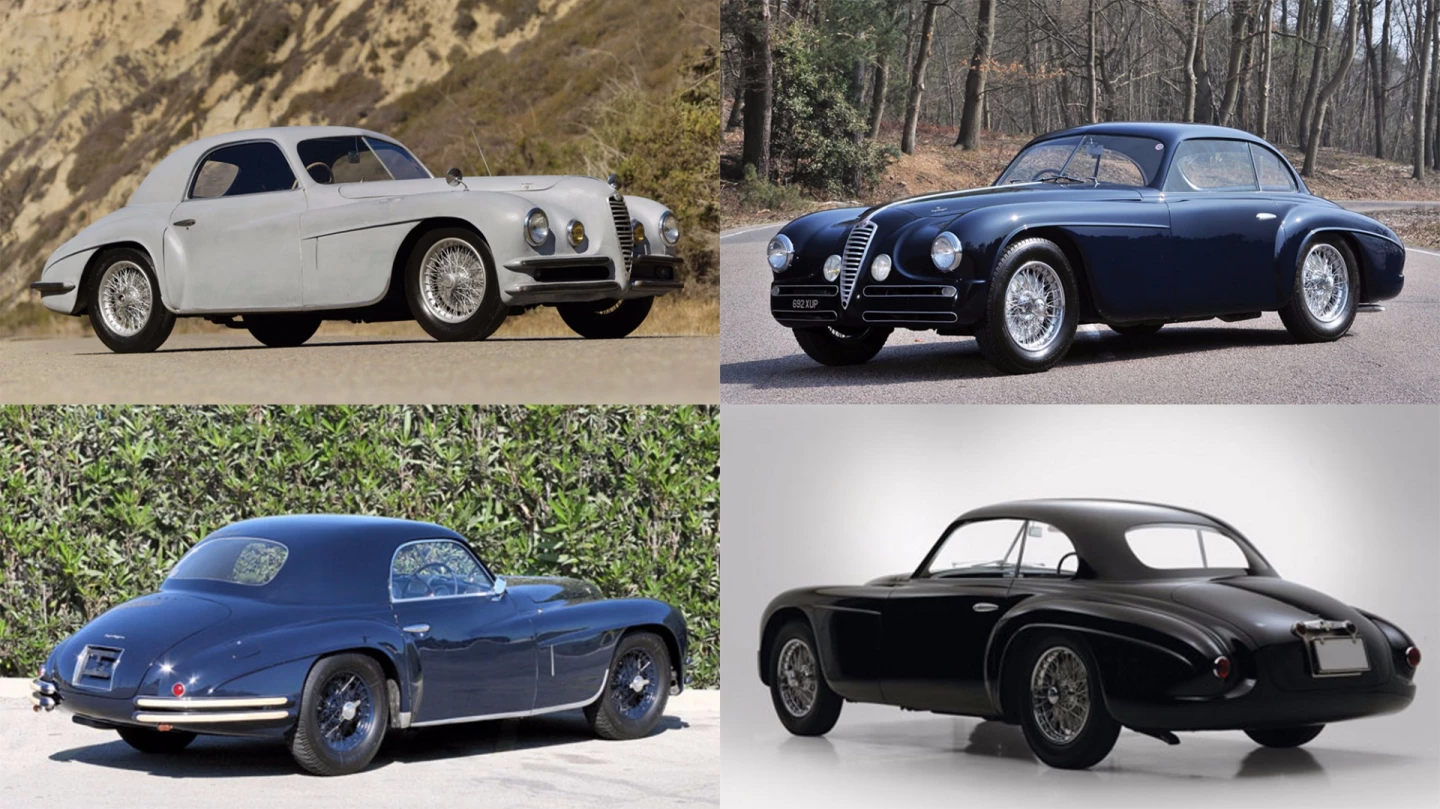
Without doubt, the immediate post-WW2 Alfa Romeo 6C 2500 Super Sport was one of the fastest cars in the world when production recommenced in 1946. Though it had officially been in production since 1938, the car had been evolving for two decades prior to that and had won numerous Le Mans 24 Hour Races and been one of the fastest of the pre-WW2 road cars.
By 1946, it was claimed to be capable of106 mph (171 km/h) in non-competition 110 hp guise, but a variety of bodies and styles and weights meant it had a top speed post-war of between 104 mph and 110 mph. Its prohibitive cost meant its customers were few and wealthy and included royalty such as King Farouk, Alì Khan, Prince Rainier of Monaco and movie stars such as Rita Hayworth and Tyrone Power. Those cars pictured have all sold recently at auction.
1947 | Healey Elliott | 110.8 mph (178 km/h)
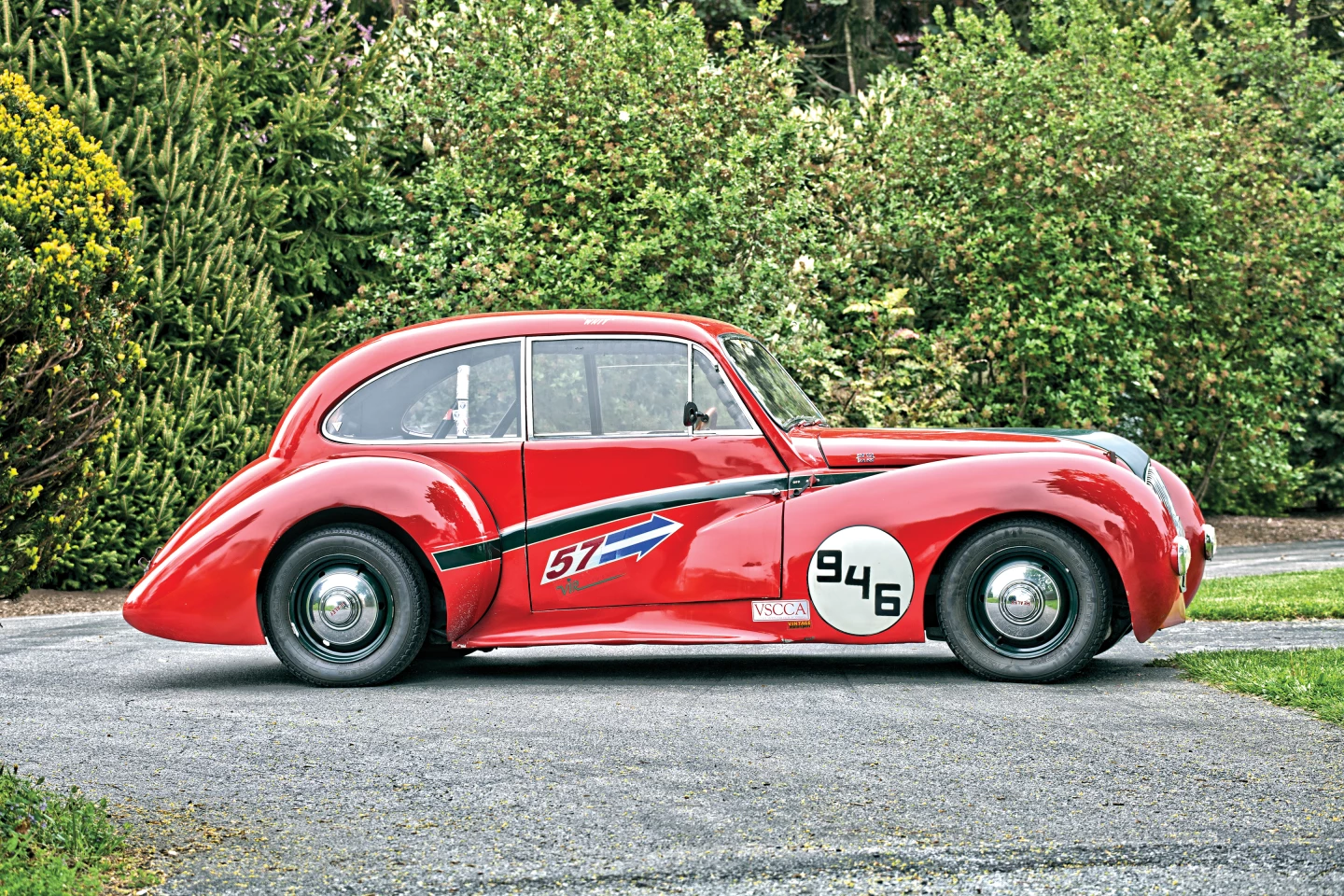
Following criticism that the fuel available to the British public was inferior to the fuel used in Italy in the first record attempt, Healey took the car to a closed motorway near Jabbeke, Belgium, for an observed run on British fuel where the car was timed at 110.8 mph over a flying mile. Healey continues to play a prominent role in performance history and is best known for the Austin Healey and more recently, the Jensen Healey.
The images on both of the Healey Elliott speed records are of a 1947 Healey Elliott Saloon that was sold by RM-Sotheby's for $33,000 in October, 2013. It seems the Healey Elliott's place in history has not registered on the auction block just yet, with similar cars fetching perhaps just 50 percent more in British sales, making this the most affordable of all the cars on this post-WW2 list. Most of the other cars on this list now cost more than a million, so US$50,000 makes this a bargain basement supercar.
1948 | Talbot Lago T26 Grand Sport | 124 mph (200 km/h)
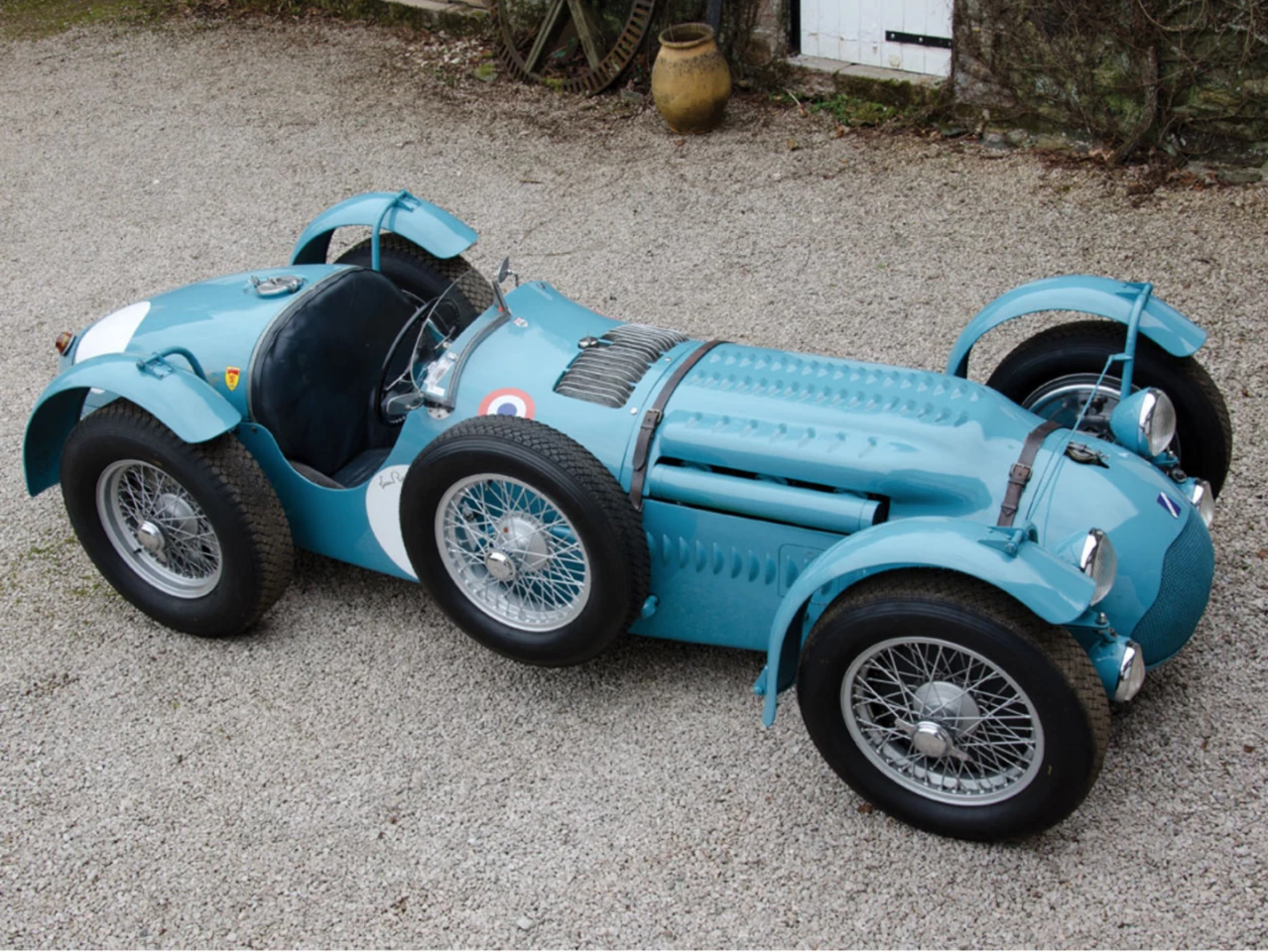
In the immediate post-war races, there were clearly faster road cars than the Healey Elliot that weren't being officially timed, with the Alfa Romeo 6C 2500 Super Sport, Delage D6S-3L, Delahaye 135CS and Talbot Lago T26 Grand Sport the most obvious. All three of these cars featured in the results of the Le Mans 24 hour race when it reconvened from 1949 onwards. The Talbot Lago T26 Record four-door saloon of 1946 claimed to be capable of 105 mph(169 km/h) with the Grand Sport above claiming a 124 mph(200 km/h) top speed. A T26-based open wheeler won two major Grands Prix in 1949, then took outright first place in the 1950 Le Mans 24 hour race, finishing second in the world's most important race again in 1951 (car pictured above).

In its initial road guise, Talbot-Lago's new 4483 cc six-cylinder in-line engine produced a reported 240 bhp, while the twin-plug version from 1950 onwards was officially quoted at 260 bhp for the coupe (above) version. The company's glory years were undoubtedly before the war when it produced successful racing cars and the highest-priced performance road cars available.
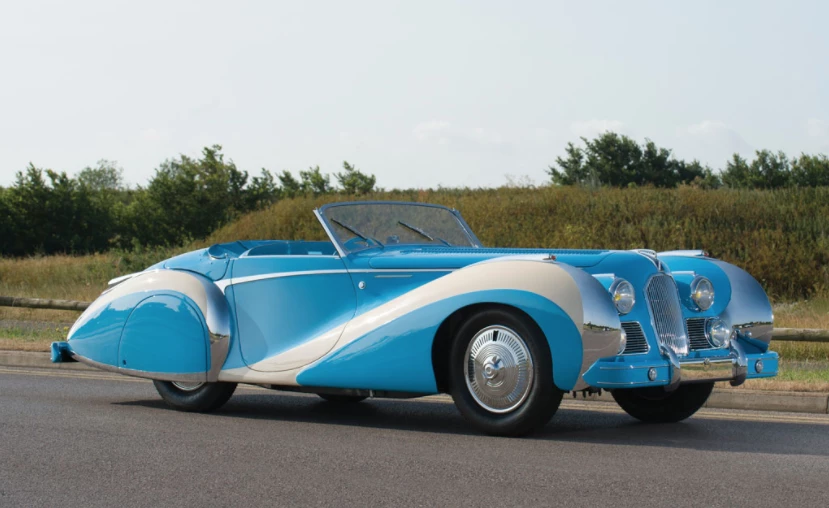
The parts and knowledge were freely exchanged between road and track, with the road cars regularly dressed by the likes of Figoni & Falaschi and Saoutchik. The 1948 Talbot-Lago T26 Grand Sport Cabriolet above is one such example of what happens when you take a Grand prix car to a French automotive couturier. RM-Sotheby's auctioned the car in Monterey this year.
1949|
| 124.6 mph (201 km/h)
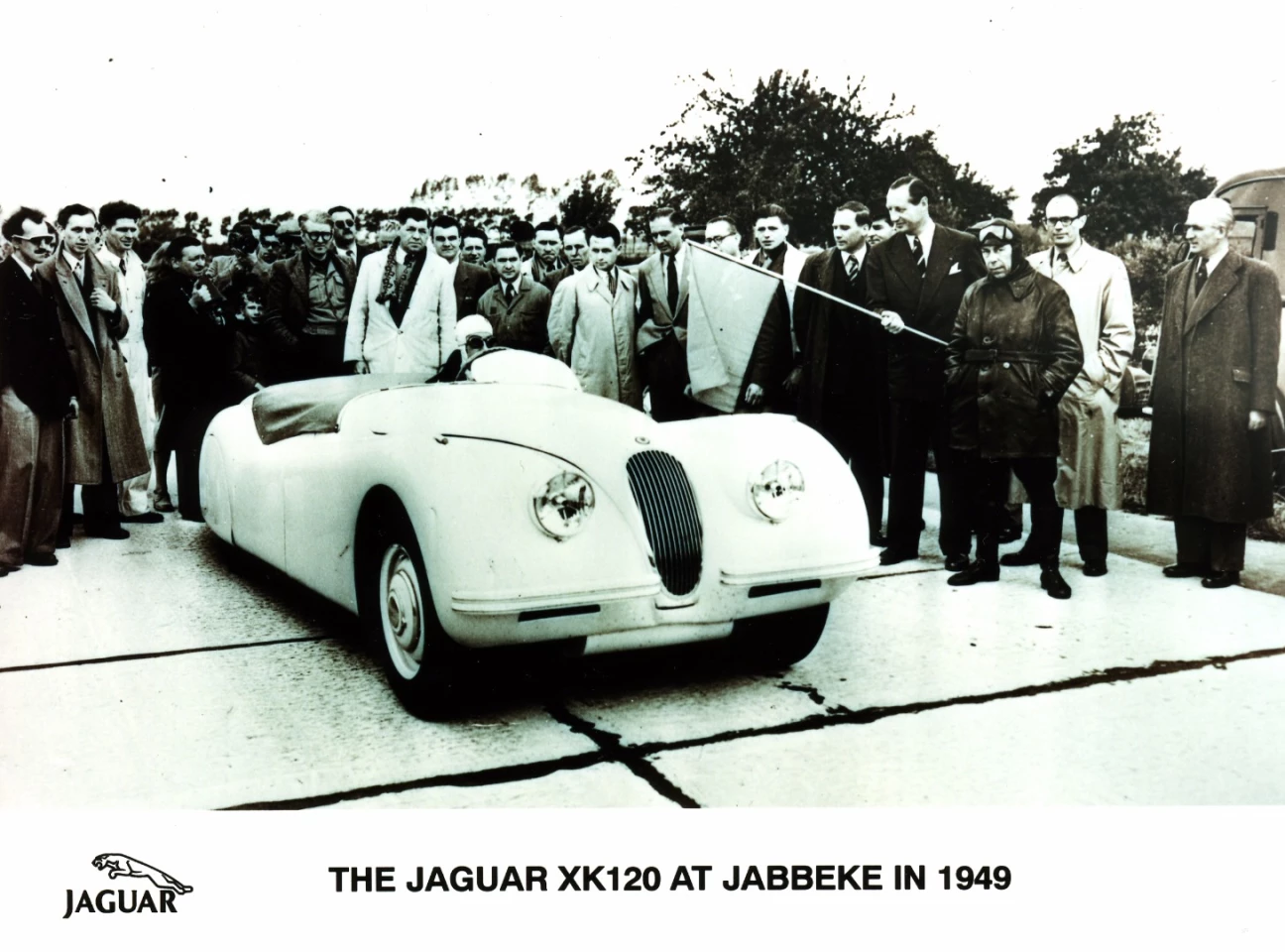
0n 30 May 1949, Jaguar took its new XK120 (the 120 represented the top speed in mph) to Jabbeke in Belgium to validate its top speed, and came away with a clear record of just over 132 mph. Loosely interpreting the meaning of "production", Jaguar removed the windshield and replaced it with a much smaller racing wind screen as well as enclosing the rear wheel opening.
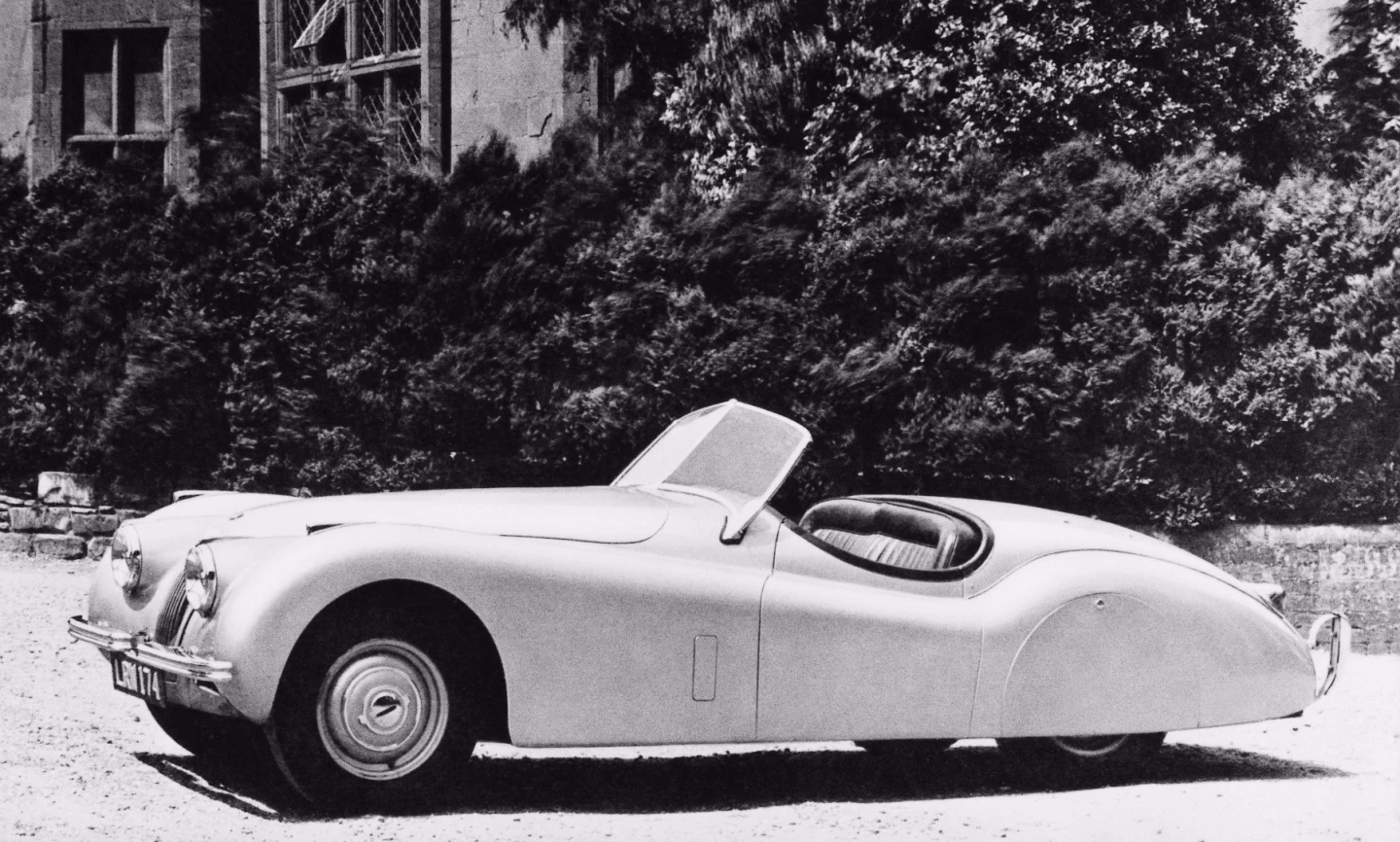
The extent of any engine modifications is not known but if the inside reflects the outside, it's not really a production car (pictured directly above and with the far-more-prominent standard windscreen). Steve McKelvie has the finer details on the Jabbeke run here.
On the empty Ostend-Jabbeke motorway in Belgium, the Royal Automobile Club of Belgium timed the opposing direction runs for a new record of 132.6 mph with the windscreen replaced and 135 mph with a passenger-side tonneau cover in place to reduce turbulence.
The Jaguar XK120 was perhaps the most accessible supercar in history. It was unquestionably the world's fastest production car for the next few years and cost £1200 when new, with more than 12,000 of them were sold to the public between 1948 and 1954. A standard XK120 would reach 120 mph as claimed, and the fastest standard XK120 was timed at 124.6 mph (201 km/h) in a test in The Motor magazine in November 1949.
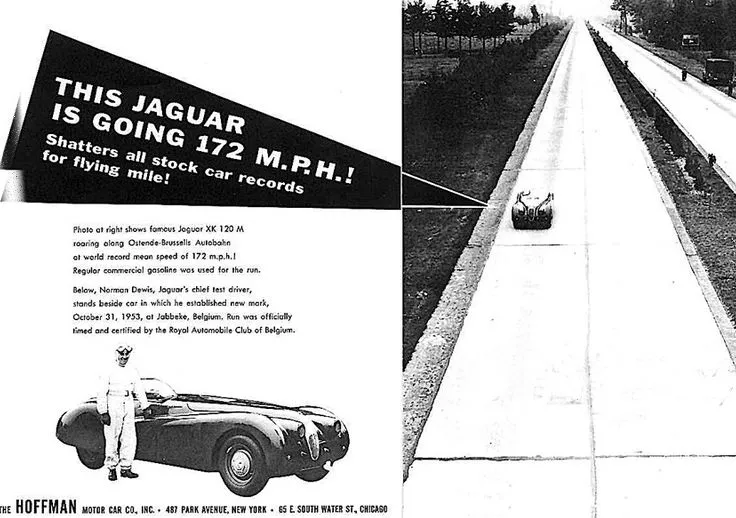
Jaguar was emboldened by the success of the promotional stunt and kept doubling down with ever more outrageous attempts. In 1950 and 1951, at the banked Montlhery circuit in France, XK120 roadsters averaged over 100 mph for 24 hours and over 130 mph for an hour. In 1952 a fixed-head coupé took numerous world records for speed and distance when it averaged 100 mph for a week. Going a step further in 1953, Jaguar produced an even more streamlined XK120 with a lot more horsepower and clocked a remarkable 172 mph, with the above advert loosely claiming "stock car records."
1953 | Pegaso Z-102 | 151 mph (243 km/h)
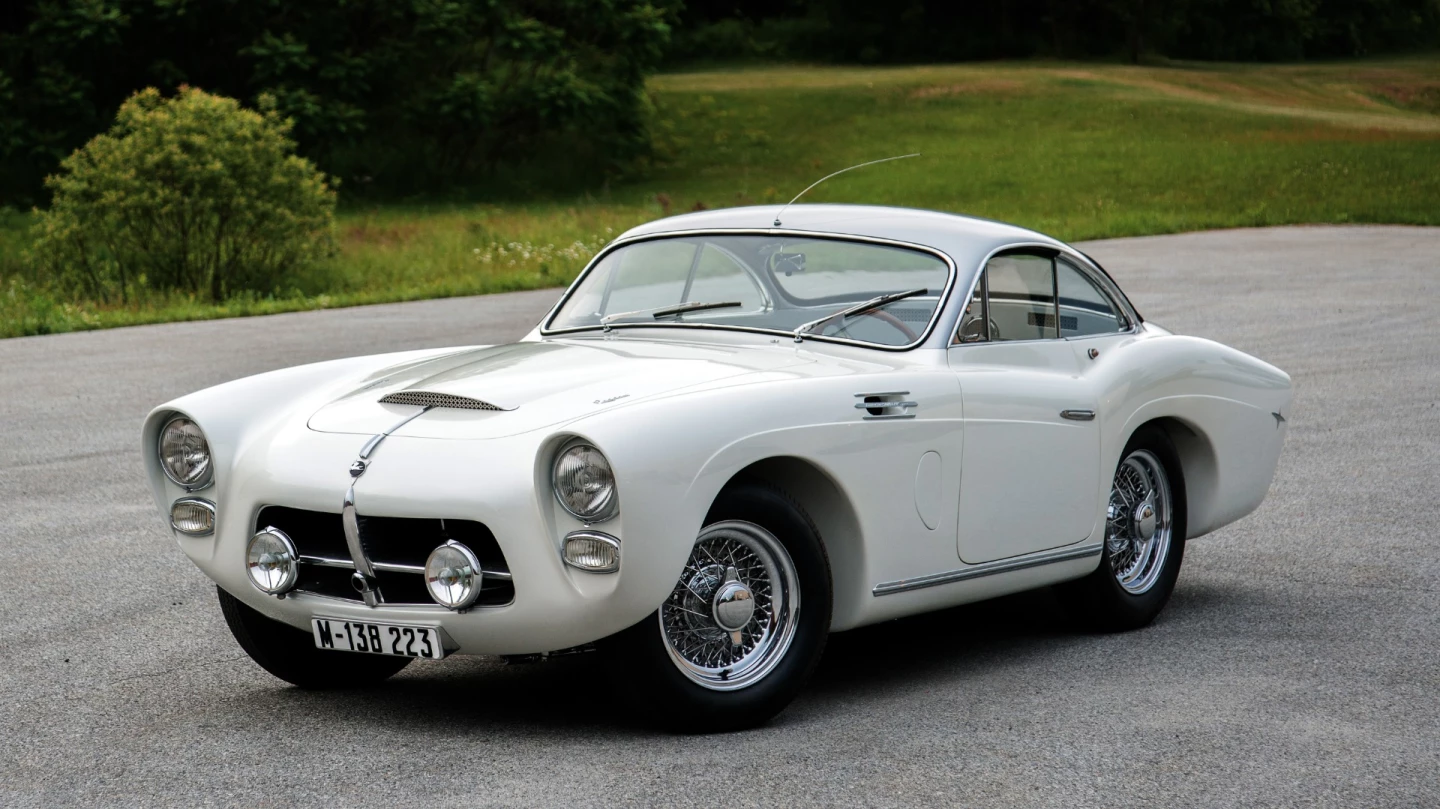
Often referred to as the Spanish Ferrari, the aluminum-bodied Pegaso Z-102 debuted in 1951 with a range of V8 engines. The base 2.5 liter model had a 120 mph (192 km/h) top speed but it was the biggest 3.2 liter, gear-driven desmodromic DOHC alloy V8 that produced a prodigious 360 hp and a top speed of 155 mph with a body that usually resulted in an all-up weight of around 1000 kg. It is believed that 86 Z-102 cars were built between 1951 and 1958, with 19 of the most-powerful 155 mph model produced. The car above is a spectacular survivor, having been sold by RM-Sotheby's for $880,000 at Monterey Car Week 2016. Built for the 1954 Paris Auto Salon show, it used a 195 bhp, 2,816 cc DOHC V-8 engine breathing via two four-barrel Weber carburetors, it was bodied by Saoutchik, yet another variation in production methods of the time that has caused many experts to disqualify it as a genuine production car. The manufacturing methodology of elite automobiles was still in transition in the immediate post WW2 period, and we don't feel that has been taken into account in the framing of some rules for this title.
1955 | Mercedes-Benz 300 SL | 140 mph(225 km/h)

The Mercedes-Benz 300 SL ("Sport Leicht") with its famous gull-wing doors was first shown at the 1954 New York Auto Show as a two-seat coupé. Available from March 1955, it was joined two years later by an even more popular open top roadster sibling.
Sold as a roadgoing version of the ultra-successful W194 built by Mercedes-Benz for the 1951 Sportscar racing season, both cars were related to the W196 Formula One car, and the race-winning exploits of Mercedes-Benz factory drivers Sterling Moss and Juan Manuel Fangio ensured it was a runaway success in the United States, with 80 percent of the 3,258 cars built (1,400 Gullwings and 1,858 Roadsters) sold into America, including 29 aluminum-bodied cars (80 kg lighter) which were considerably more expensive and remain the most desirable specimens of the breed.
The Mercedes-Benz 300 SL captured the mind of the public with this heady mix of race-winning chassis and high tech civility with the canted engine being the first production car to offer fuel injection. The high production numbers of the 300 SL continue to defy the laws of supply and demand on the auction block even today, with Gullwings or roadsters rarely changing hands for less than US$1.0 million and the world record price for the model held by one of the 29 all-aluminum body cars, which sold for US$4.62 million in Scottsdale, Arizona, in 2012.
The officially stated top speed of the 300 SL was 140 mph (260 km/h) but depending on the optional final drive ratio fitted, 160 mph could be seen on the speedo under the right conditions.
1958 | Aston Martin DB4 | 141 mph (227 km/h)
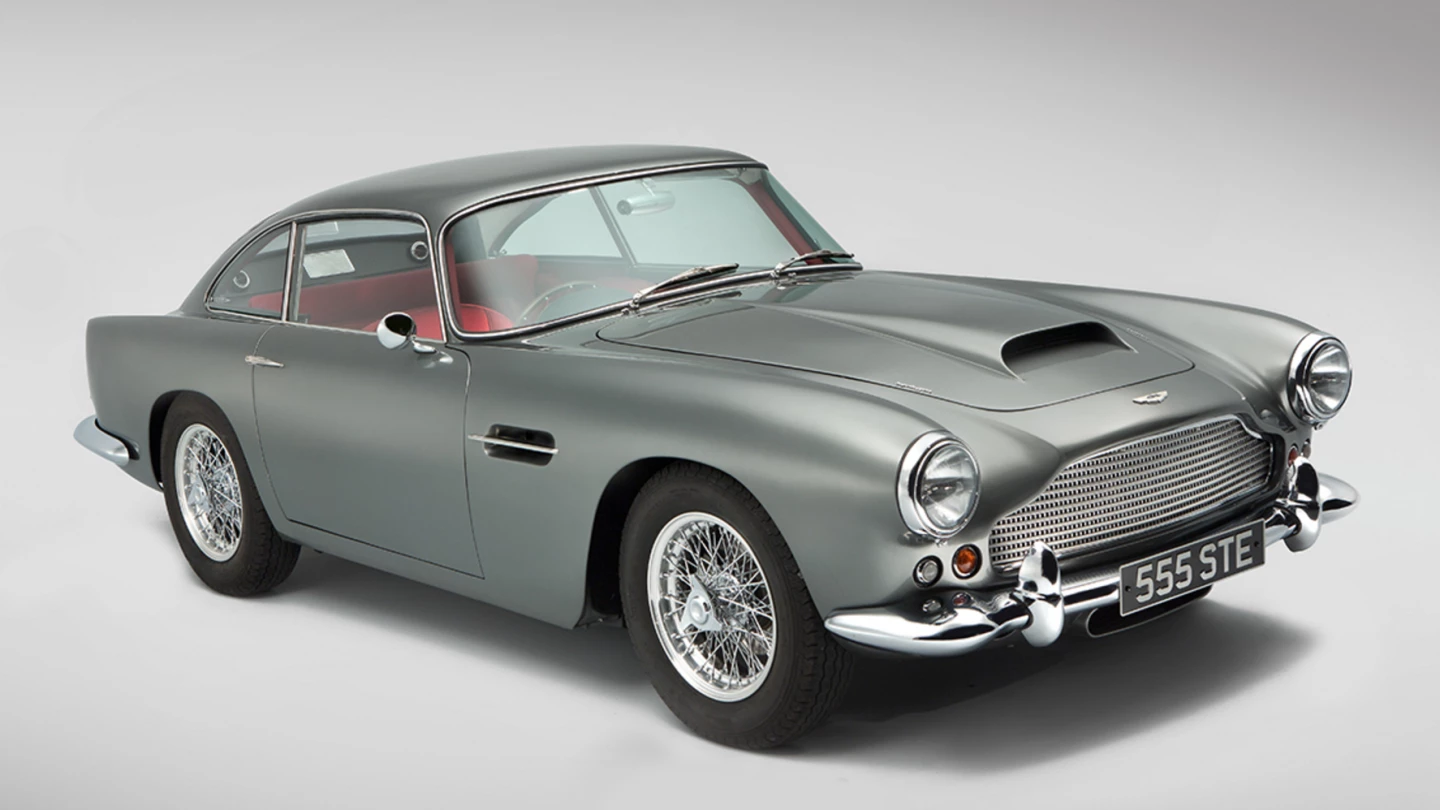
The Aston Martin DB4 was produced from 1958 until 1963, with its 3670 cc DOHC six cyinder engine producing 240 hp and propelling it to a top speed, as tested by Autocar magazine in 1961, of 141 mph(227 km/h). The next model would become even more famous as fictional secret agent James Bond began his successful run at the movie box office, driving his famous gadget-enriched and visually similar DB5. An appreciation of the vehicle can be had in this brief photographic essay of a restoration of the model.
1959 | Aston Martin DB4 GT | 152 mph (245 km/h)

The DB4 GT was a lighter, higher-performance version of the DB4 introduced in September 1959, and was timed at 152 mph(245 km/h) by Autosport in December 1961. The aluminum body was thinner, the wheelbase was shorter, and the range-topping 3750 cc engine produced 302 hp. The car above is the final GT off the production line, the bespoke 1960 DB4GT "Jet" Coupe which sold at a Bonhams auction at Aston Martin's Newport Pagnell facility in May, 2013, for £3,249,500. Bertone built the Gran Turismo version for the 1961 Geneva Motor Show and that's it above. The car was the work of a young Giorgetto Giugiaro and was shown at the same Geneva show which was marked by the debut of Jaguar's new E-type.
1960 | Aston Martin DB4 GT Zagato | 153.5 mph (247 km/h)
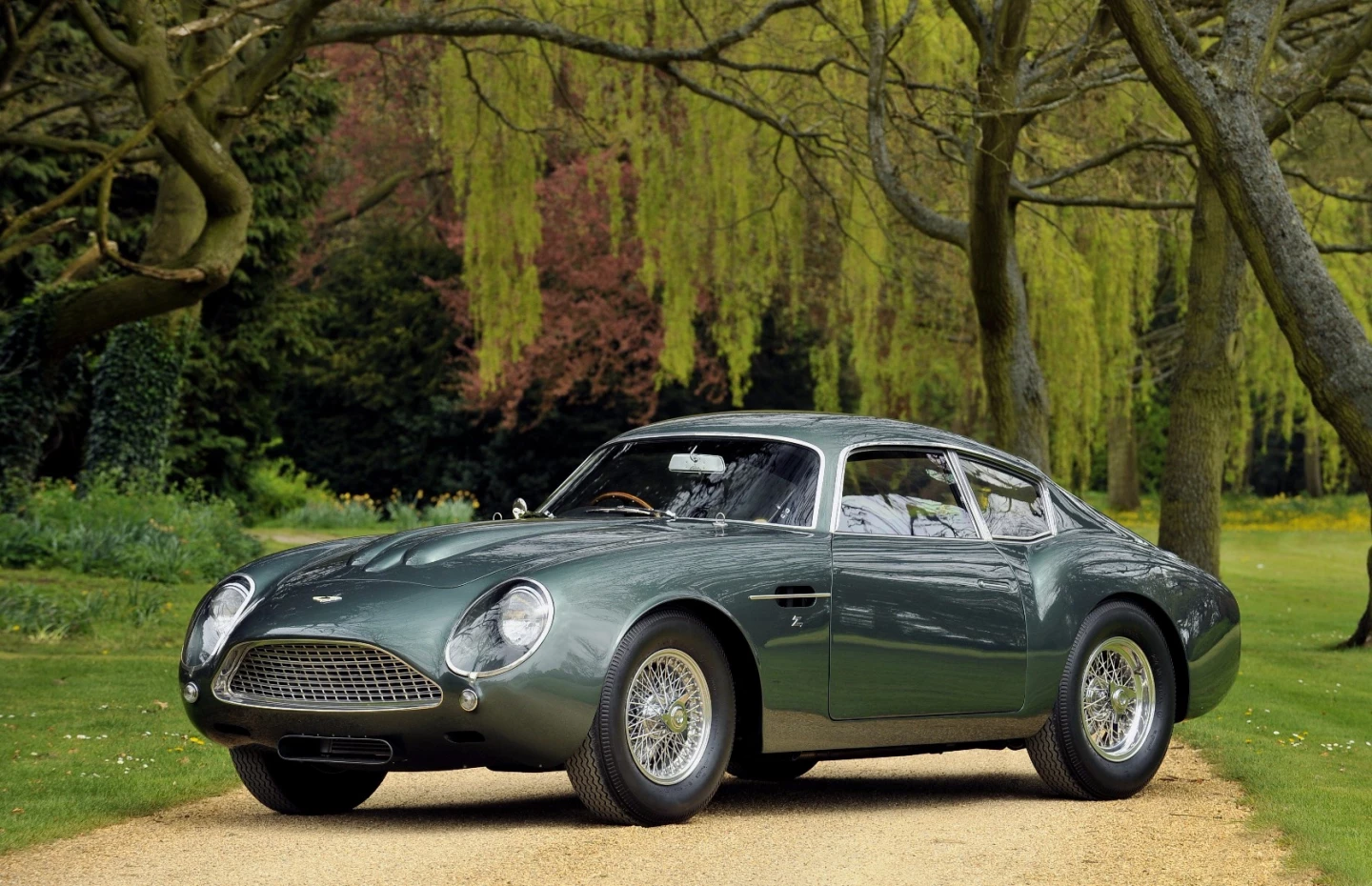
The Aston Martin DB4 GT Zagato was introduced at the London Motor Show in October 1960, being a lightened 314 hp (234 kW) DB4 GT with Zagato styling. It was timed at 153.5 mph (247 km/h) making it the fastest production car to that time, though whether it qualifies as a production car considering only 19 were built at the time is the main issue.
1962 | Ferrari 250 GTO | 158 mph (254 km/h)
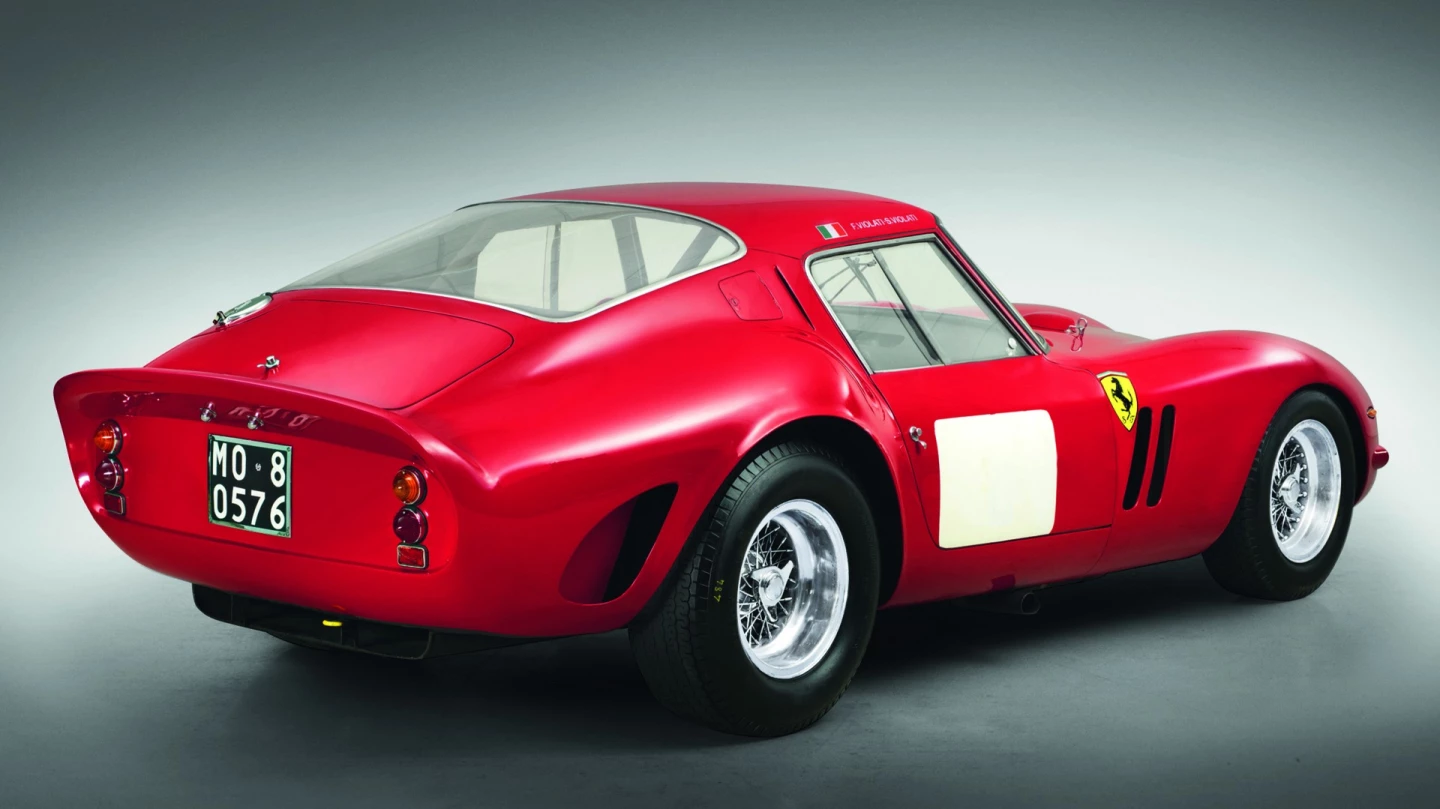
The most revered modern car is the Ferrari 250 GTO, which also holds the record of US$34,650,000 (US$38,115,000 including buyers premium) for any car at auction.
The Ferrari 250 GTO was developed to contest the 1962 3-liter class FIA GT World Championship series and was produced in limited quantities from 1962 to 1964 for homologation into the FIA's Group 3 Grand Touring Car category – GTO stands for "Gran Turismo Omologato," or "Grand Touring Homologated" in English. Thirty-six cars were made in 1962 and 1963, and in 1964 a "Series II" was introduced, which had a slightly different look. Three such cars were made, and four older "Series I" were given a "Series II" body. It brought the total of GTOs produced to 39. The Ferrari 250 GTO won the World title both years and with a top speed conservatively claimed of 158 mph(254 km/h), it was the world's fastest production car depending on your definition. There were certainly enough of them built to qualify and it won the over 2000 cc class of the FIA's International Championship for GT Manufacturers in 1962, 1963, and 1964, proving it had the speed to beat all comers.
1963 | Studebaker Avanti | 168.24 mph (270.76 km/h)

The Studebaker Avanti is a cult car in American automotive circles, a serious performance car that became a last gasp attempt at innovation by the ailing Studebaker brand. The lightweight fiberglass-bodied Avanti was blessed with Studebaker's 289 cu. in. (4,737 cc) V8 tuned to deliver 240 hp (179 kW) in its initial R1 configuration, but the optional R2 package added a Paxton supercharger for 290 hp (216 kW). This promotional film made by the Studebaker factory documents the speed attempts which resulted in the car clocking 168.24 mph (270.76 km/h) in 1963. The cars used to illustrate the model above have all sold at auction in recent times, usually selling in the sub-US$30,000 area, perhaps due to the number made.
1965 | Iso Grifo GL 365 | 161 mph (259 km/h)

The Iso Grifo was a limited production grand tourer automobile built in Italy by Iso Autoveicoli S.p.A. from 1965 to 1974 with styling by Giorgetto Giugiaro at Bertone, and mechanicals by Giotto Bizzarrini, the former chief engineer at Ferrari who was behind the development of the 250 GTO. The initial cars used Chevrolet Corvette small-block 327 (5.4 L) V8s fitted to Borg-Warner 4-speed manual transmissions, becoming available in 1965. The engines produced over 400 horsepower (300 kW), propelling the 1,000 kg Iso Grifo GL 365 to 161 mph(259 km/h) with later versions of the car using a big-block Chevrolet 454 V8 and achieving 171 mph (275 km/h).
1964 | Ferrari 500 Superfast | 171 mph (275 km/h)

Unveiled at the 1964 Geneva Auto Salon, the 500 Superfast was the last in a series of ultra-exclusive Ferrari road cars, built in limited numbers (36 only) for the world's elite. Owners of the 171 mph (275 km/h) 500 Superfast included Shah Reza Pahlevi of Iran, Barbara Hutton, and Peter Sellers.The car pictured above was purchased new by Prince Sadruddin Aga Khan, and recently sold at auction for $3,025,000.
1965 | AC Cobra MkIII 427 | 165 mph (266 km/h)
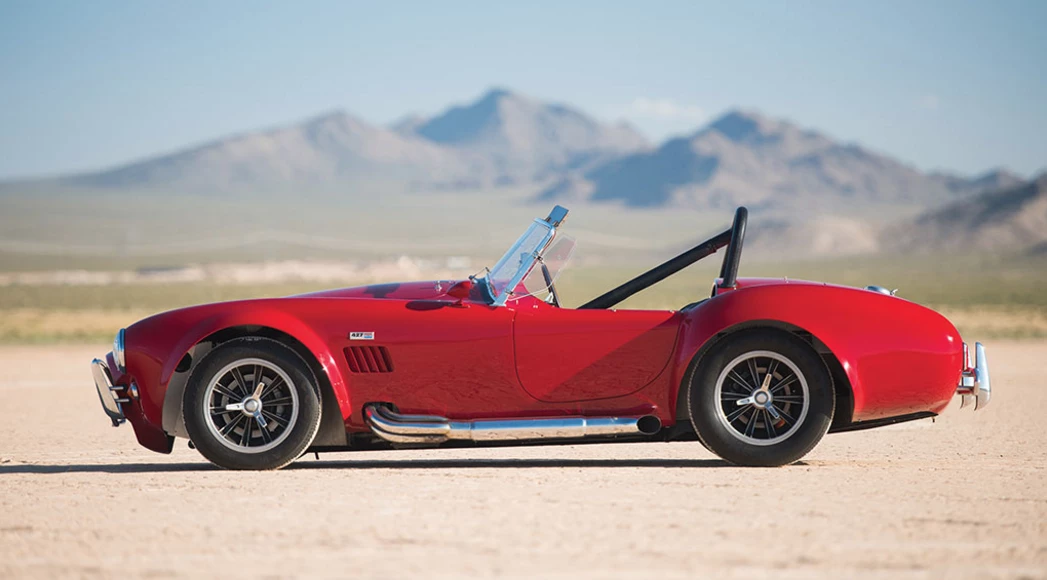
In 1965, a newAC Cobra Mk III 427 was tested by Car & Driver magazine and accredited with a top speed of 165 mph(266 km/h).
1967 | Lamborghini Miura P400 | 171 mph (275 km/h)
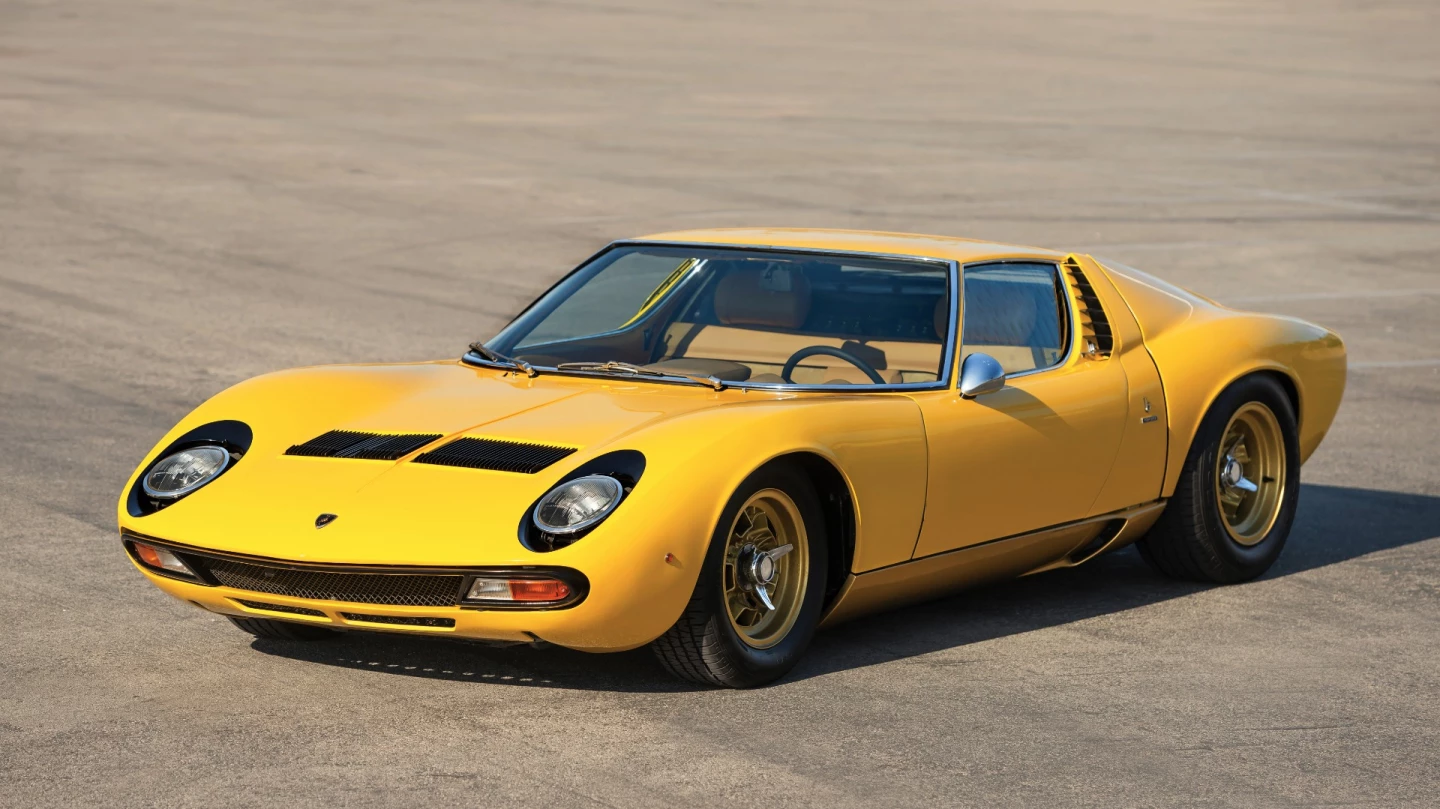
Ferrucio Lamborghini had a strict no-racing policy, feeling that racing was expensive and too narrowly focused, and that his company should concentrate on producing elite, high performance road cars rather than chasing trophies. The first notice of what was planned was the showing of the Mira's bare chassis at Turin in 1965 and a few show-goers slapped down pre-orders on the spot despite the P400 not even having any bodywork. At the following year's show came the whole package, styled by Marcello Gandini at Bertone and the first Lamborghini to take the name of a fighting bull. Its 385 hp V12 engine displaced just under four liters and with a miniscule frontal area and high aerodynamic efficiency, it became the fastest production car in the world.
1968 | Ferrari 365 GTB/4 Daytona | 174 mph (280 km/h)
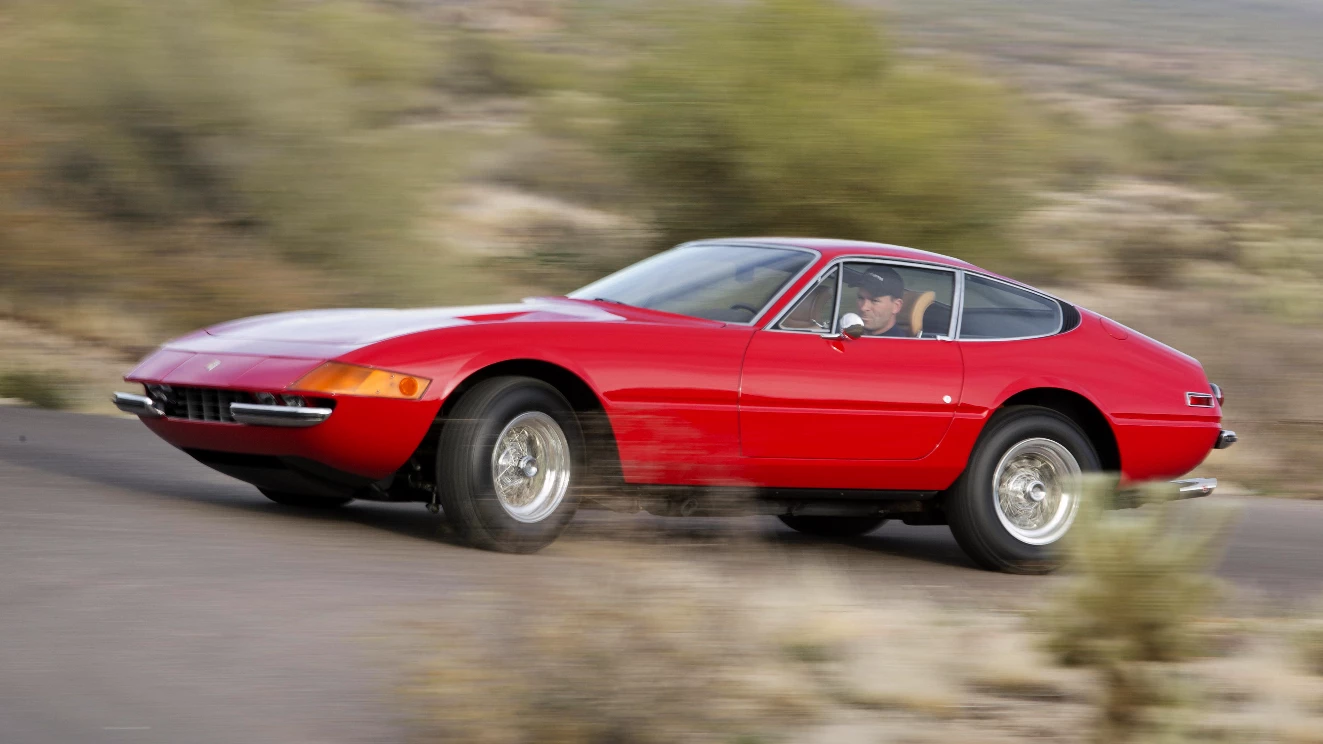
Ferrari's new 352 hp, 4-cam V12 Berlinetta was launched at the October 1968 Paris Salon, and was nicknamed the "Daytona" in honor of the Ferrari factory team's 1-2-3 victory in the 1967 Daytona 24-Hour race. New American safety legislation deemed covered headlights illegal, so Ferrari and Pininfarina fitted retractable headlights and the even-more-streamlined 365 GTB/4 Daytona was capable of achieving 174 mph (280 km/h) in standard form.
1974 | Lamborghini Countach LP400 | 179 mph (288 km/h)
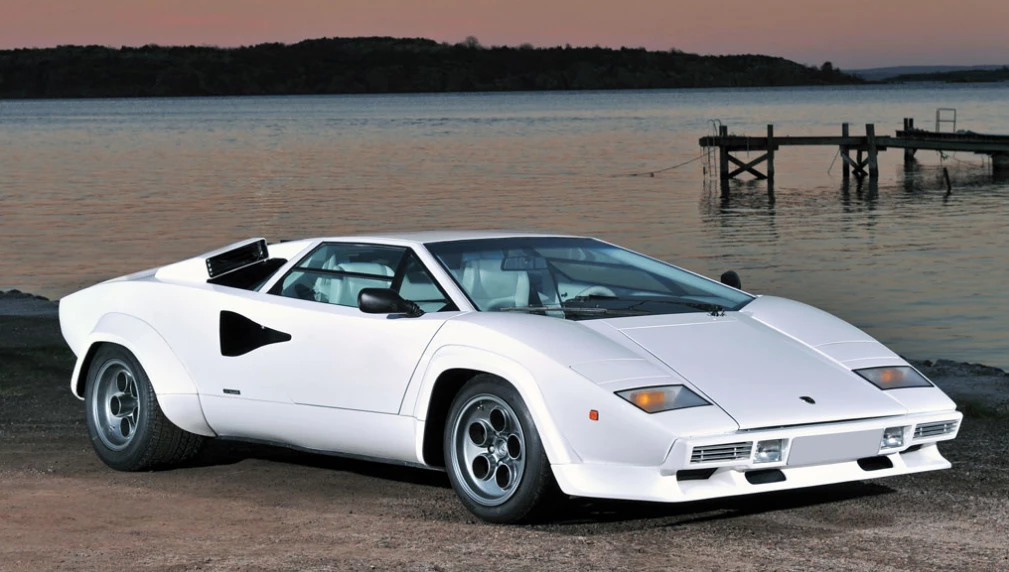
Most modern supercars owe their basic shape to this one extraordinary and outrageous leap in styling: the Lamborghini Countach LP400. Made by Lamborghini and designed by Bertone in 1971, it was the first production Lambo to sport what became the brand's trademark scissor doors and it looked like a polygonal spaceship in a way that no car before it had done ... and with its 3929 cc mid-engined V12 delivering 370 hp, it could top 179 mph(288 km/h) on the autostrada.
1982 | Lamborghini Countach LP500 | 182 mph (293 km/h)
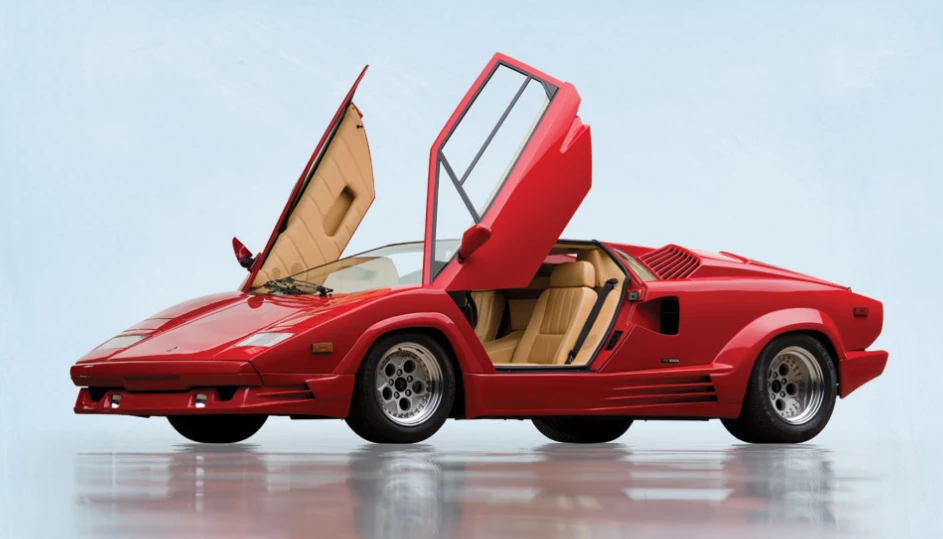
The 1982Lamborghini Countach LP500 S offered a bigger 4754 cc engine, more horsepower and a top speed of 182 mph(293 km/h).
1984 | Ferrari 288 GTO | 188 mph (303 km/h)
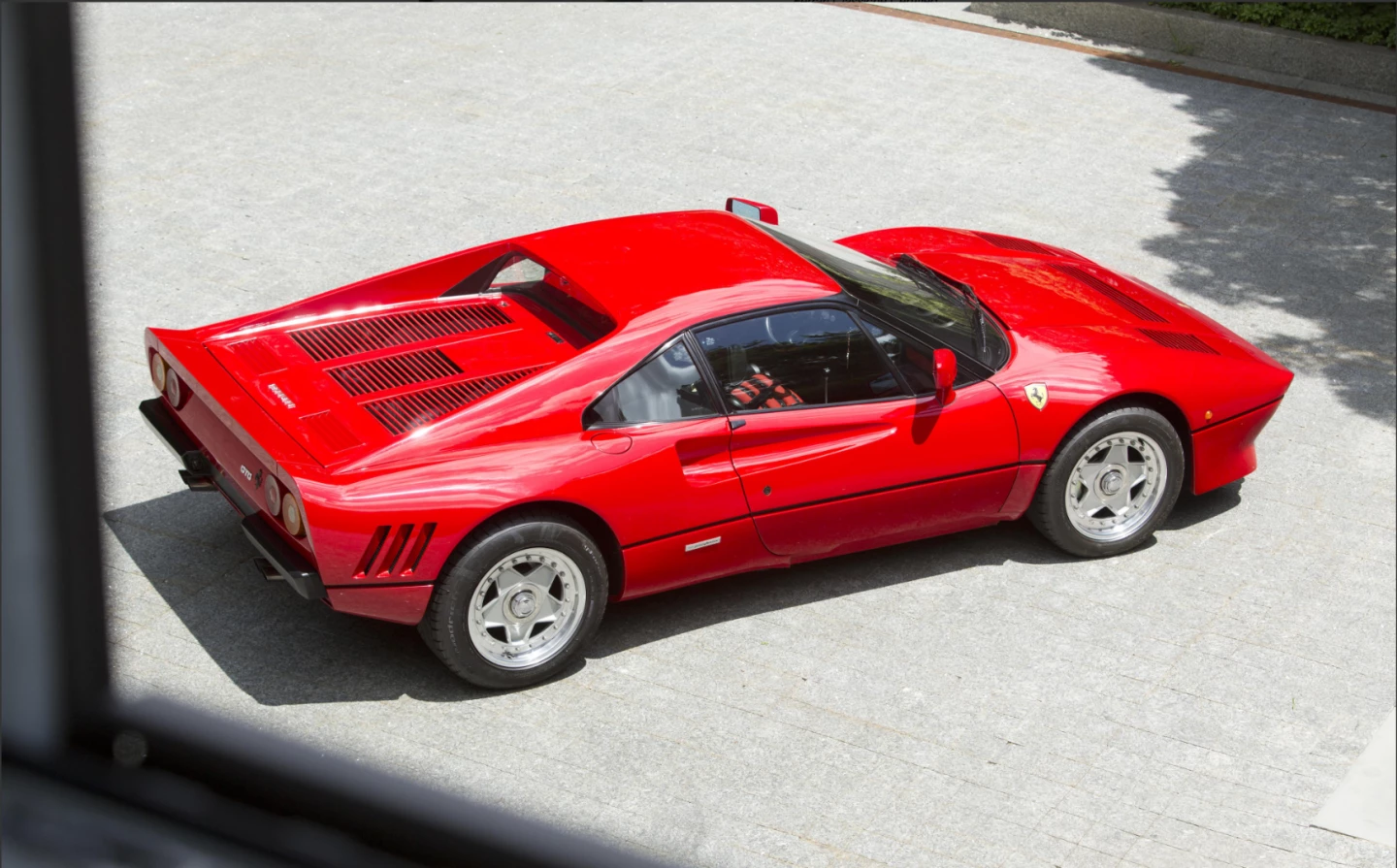
Everyone knows about the mythical Ferrari 250 GTO and the astronomical prices the car commands. The GTO was made in very limited numbers and they are so balanced, powerful, drivable and rare that they now sell for beyond $30 million dollars. Ferrari didn't use the magical GTO (Gran Turismo Omologato) moniker a second time for no reason. The 288 GTO is an extraordinary car built to go racing, but when the FIM abolished its intended racing category, it never got to demonstrate just how good it really was on the racetrack. Its greatest fault is that it isn't nearly as rare as the 250 GTO, with 272 cars made versus the 39 of the original. Just the same, the entire run was sold before production even started. It may not have quite the exclusivity or as much time in the marketplace as the original (being made in 1984-1985 compared to the 250 GTO's production period of 1962-1964), but it's better looking than its dad, much faster (188 mph, 303 km/h) and a genuine driver's car. Prices for the 288 GTO at auction have escalated dramatically since 2012.
1986 | Porsche 959 | 197 mph (317 km/h)
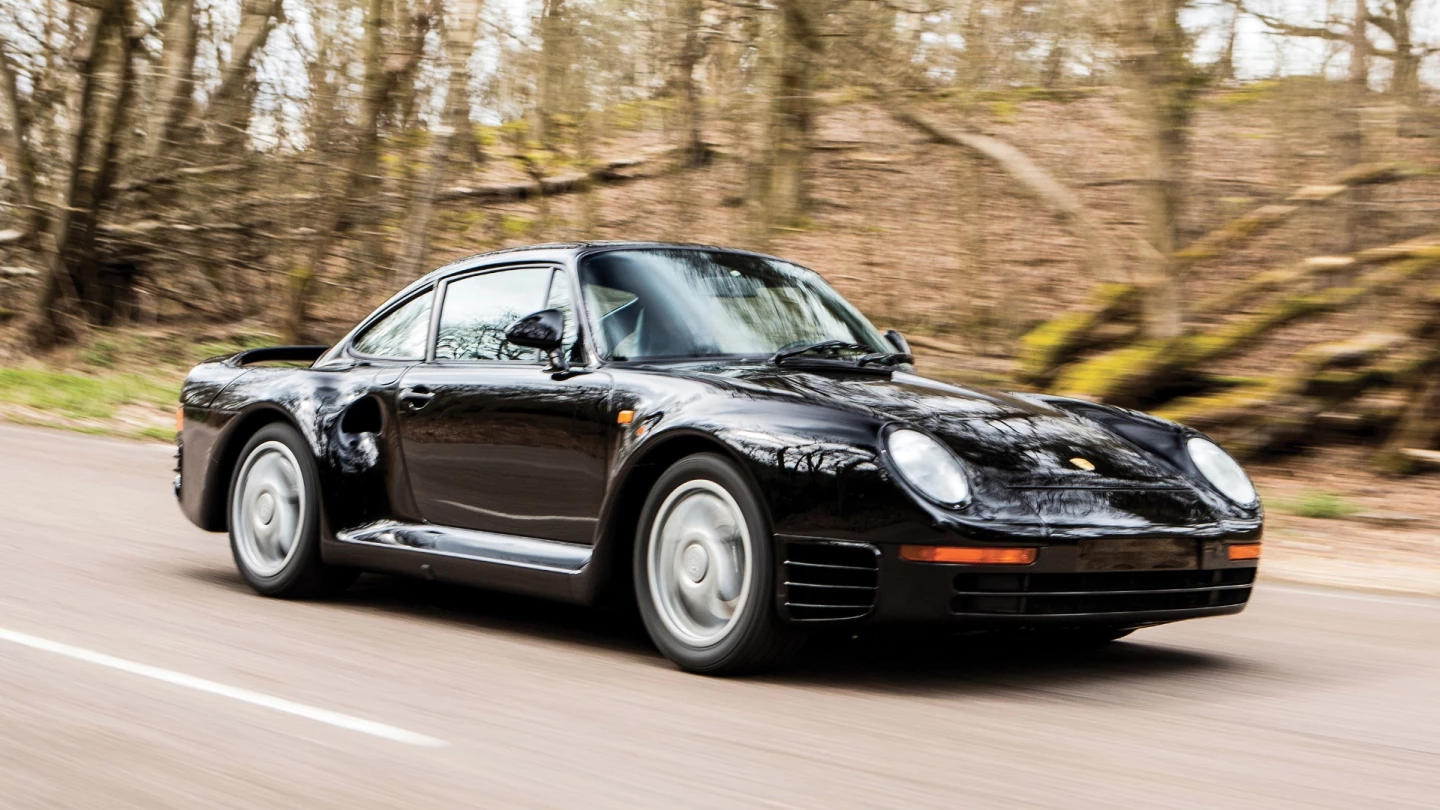
It held the title of the world's fastest production road car, but the 959's significance was far greater in many respects as it was also the first four-wheel drive Porsche road car and contained myriad innovations that are still used on Porsche's models to this day. What the F1 Mclaren was to the nineties, the 959 Porsche was to the eighties: the most technologically advanced, mold-breaking supercar of its era. Only 337 cars were built, including 37 prototypes and pre-production models and each and every one of them will become superb long-term investments, regardless of occasional market corrections. In 1986, aPorsche 959 was timed at 197 mph(317 km/h).
1987 | Ruff CTR| 212.5 mph (342 km/h)
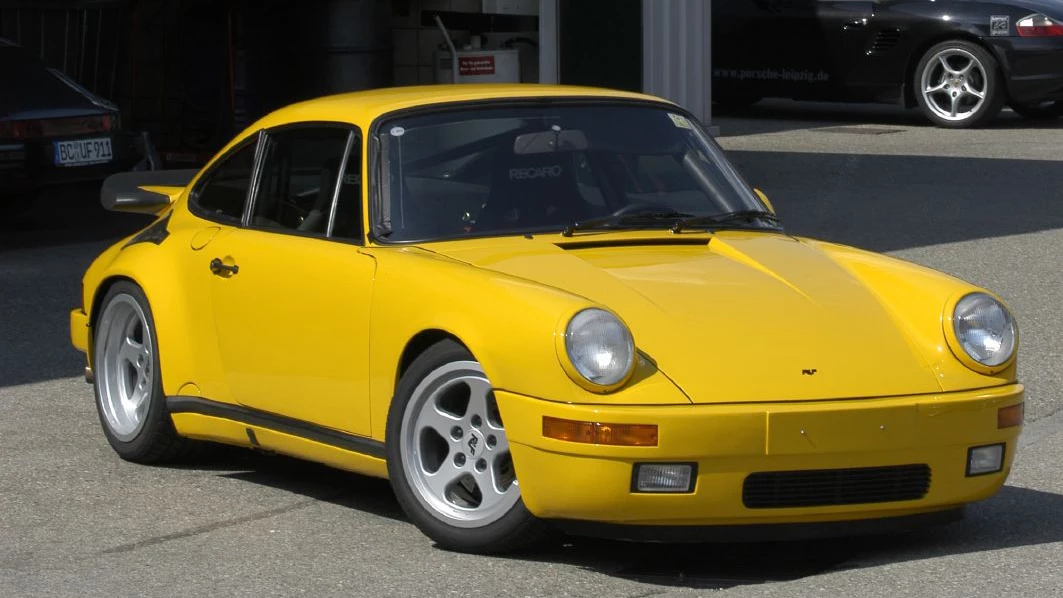
The twin-turbo Ruf CTR was based on the Porsche 911 with a tuned version of Porsche's 3.2 liter flat-six engine bored to 3.4 liters and producing 469 hp, lightened body panels, an integrated roll cage and upgraded suspension and braking systems. In April 1987 it won Road & Track magazine's "World's Fastest Cars" contest to be named "The Fastest Production Car in the World". It did the standing quarter mile in 11.7s and its top speed was measured at 211 mph (340 km/h).In 1988 Auto, Motor und Sport organized a high speed test at Nardò Ring in Italy where the Ruf CTR reached 342 km/h (213 mph), surpassing a Porsche 959's 339 km/h (211 mph), two Ferrari F40s at 321 km/h (199 mph) and a Mercedes AMG 6.0 32V at 288 km/h (179 mph).
1987 | Ferrari F40 | 202.6 mph (326 km/h)
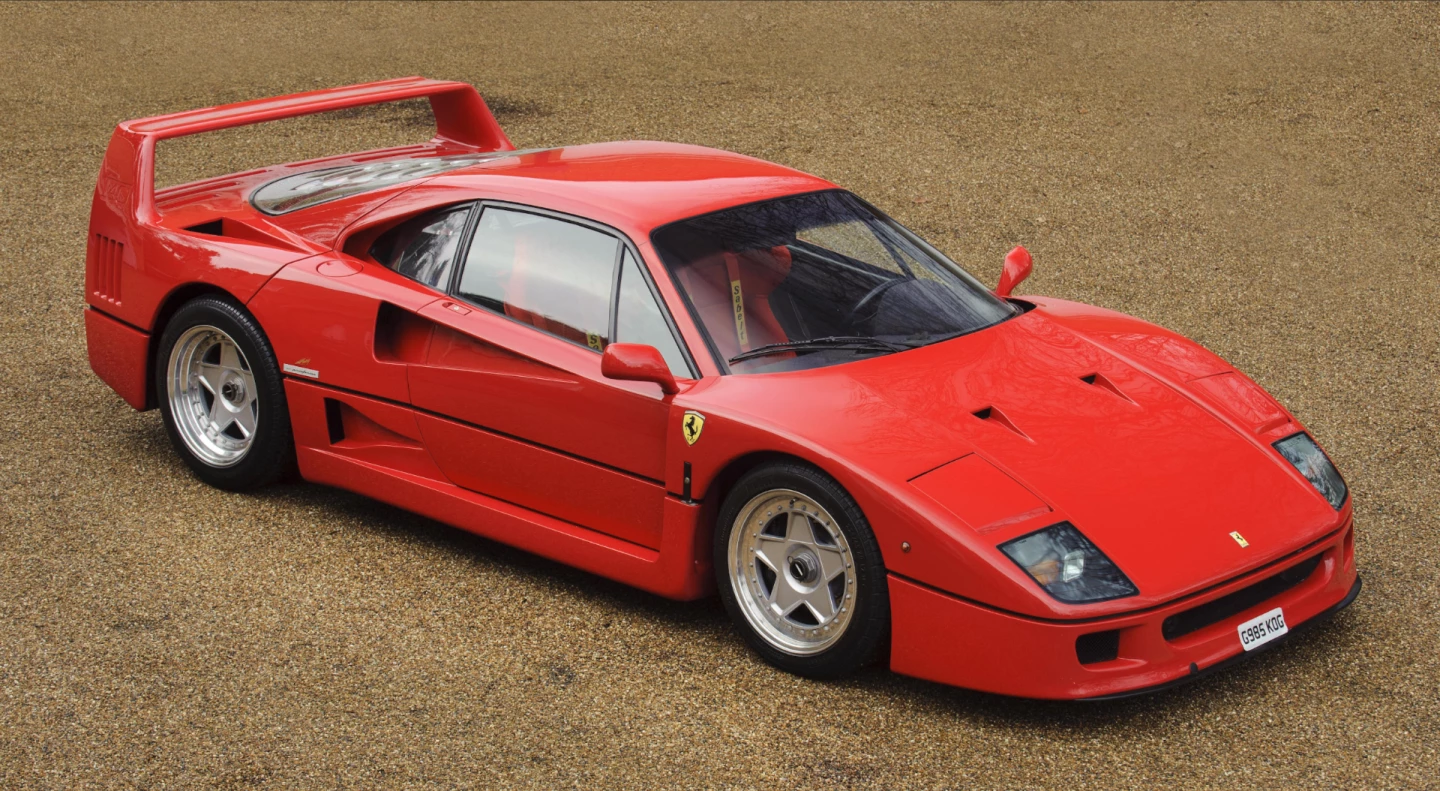
Ferrari's F40 was intended to be the fastest car in the world, but it was never timed at over 200 mph outside Italy, and as above, two factory-prepared F40s were both 20 km/h down on the Ruf CTR and Porsche 959.
1990 | Vector W8 | 242 mph (389 km/h)

The Vector W8 was an American supercar produced from 1990 to 1993 utilizing aerospace materials. Just 19 W8s were produced and sold new for $448,000, an astonishing amount for the time. The cars featured an epoxy-bonded and riveted aluminum semi-monocoque chassis with an aluminum honeycomb floor pan, and the Rodeck Aluminum 365 cu. in. racing engine used twin intercooled turbochargers to produce 625 hp. The turbo boost levels were driver adjustable between 8 and 14 psi and the W8 had a claimed top speed of 242 mph(389 km/h).
1992 | Jaguar XJ220 | 217.1 mph (349.4 km/h)
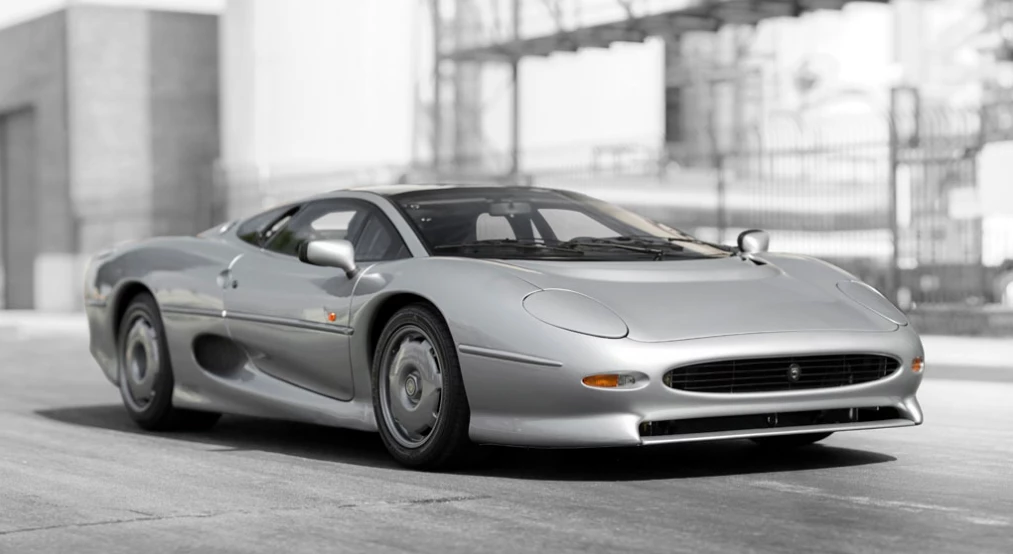
In 1988, the XJ220 concept was unveiled at the British International Motor Show with a V12 engine sending power to all four wheels, like the Porsche 959. Based on the overwhelmingly positive response it received, Jaguar started accepting pre-orders with a deposit of just £50,000 (about US$96,000 at the time). In the end, around 1,500 people laid down their cash, and delivery was slated for 1992.The production XJ220 was fitted with a 542 hp twin-turbocharged V6 in lieu of the V12 and the 4WD system went the same way. The XJ220, as the name suggests, had been targeted at a 220 mph (354 km/h) top speed, though the best it achieved under clinical conditions was 217 mph (349 km/h) on the circular Nardo circuit in Italy. When the McLaren F1 ran 231 mph (372 km/h) in 1993, the Jaguar XJ220 quickly became old news, but aficionados are still getting a bargain basement investment, as the XJ220 was a fantastic car and held the Nürburgring Nordschleife production lap record until 2000 (7:46.36).
1993 | McLaren F1 | 230 mph (370 km/h)
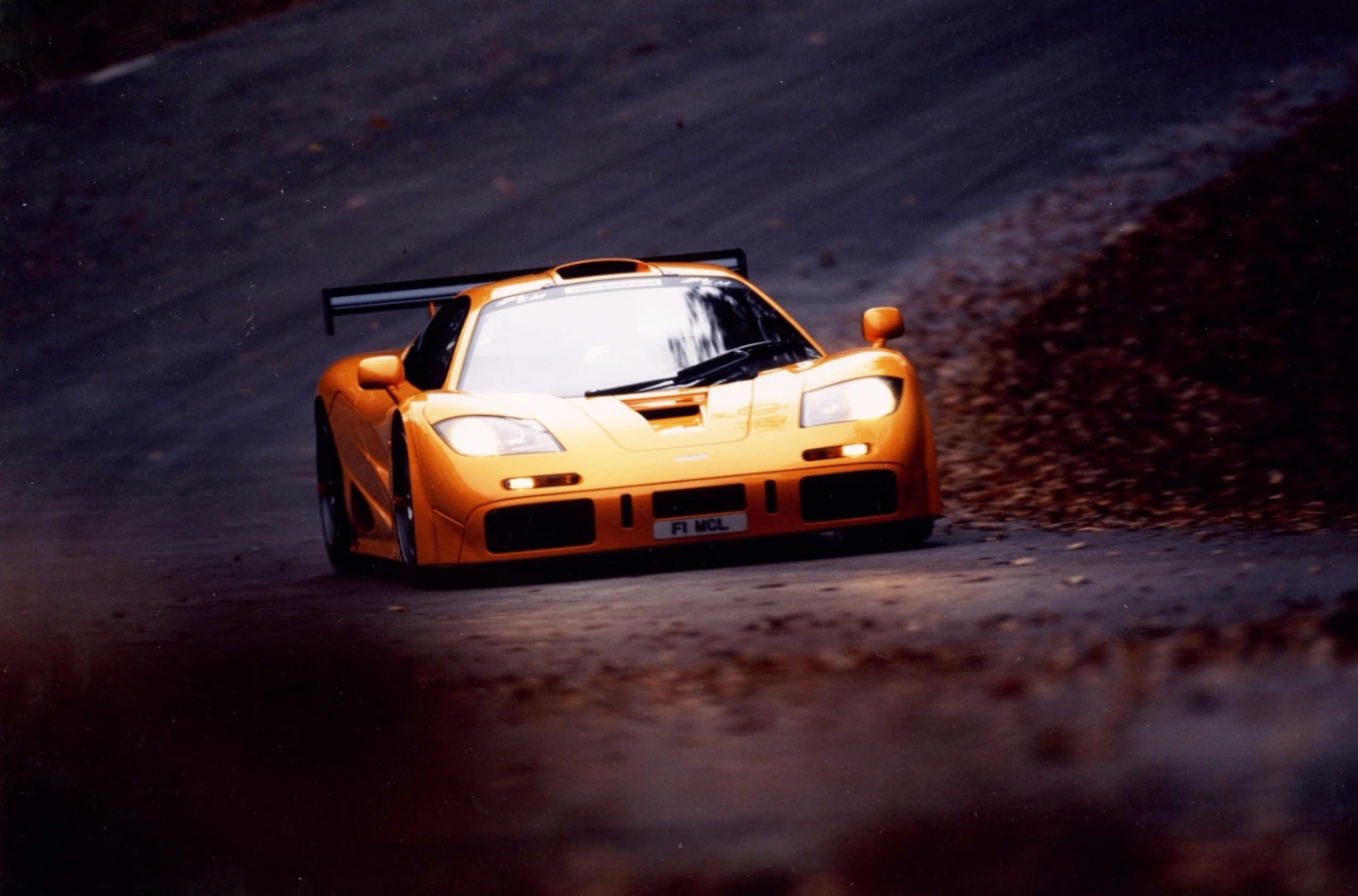
The McLaren F1 is the most significant supercar of the modern era. The rationale behind this statement is clearly elaborated in our top 100 cars article, but it boils down to its naturally-aspirated motor (still the fastest, non-forced-induction car ever), pioneering composite construction, drivability and racetrack success. The most valuable McLaren F1 of all will be the LM, because there were only five ever made and one has already sold at auction for $13,750,000. With a top speed of 230 mph(370 km/h), the McLaren F1 remained the fastest production car in the world for more than a decade after it was released. Only 106 cars were built, with the fastest recorded time eventually raised to an amazing 386.7 km/h, which was set on the 9 km straight line VW Ehra facility in Wolfsburg Germany.
1994 | Dauer 962 Le Mans | 251.4 mph (404.6 km/h)
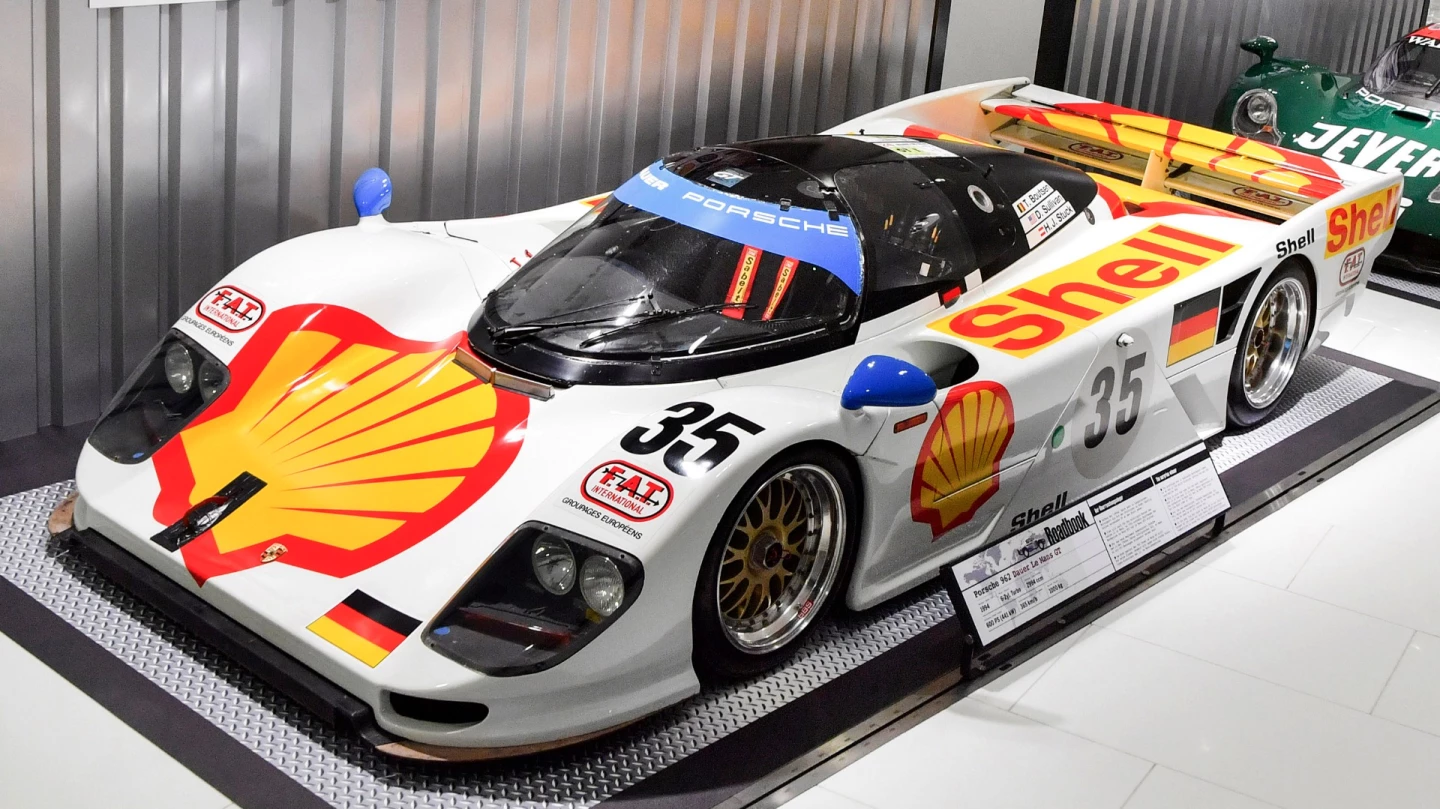
The Dauer 962 Le Mans was a limited-production sports car built from 1993 to 1997 and based on the Porsche 962 racing car, that just like the Ferrari 250 GTO, was built to circumnavigate racing regulations. Built by German Jochen Dauer's Dauer Racing, a racing version of this car went on to win the 1994 24 Hours of Le Mans with the support of Porsche. The bodywork of the road car was replaced with slightly revised carbon fibre and kevlar panels, the under tray was replaced with a flat version for better stability at high speeds, a second seat was installed in the cramped cockpit, and a modified version of Porsche's water-cooled Type-935 2994 cc twin-turbocharged flat-6 produced 730 hp (544 kW) – more power than the regs allowed the racing car upon which it was modeled. The first production car debuted at the 1993 Frankfurt Auto Show and after the Le Mans win the following year, at least twelve more examples were built. The car's top speed of251.4 mph (404.6 km/h) was independently measured, causing Evo magazine to proclaim it the "fastest street-legal production car in the world." That's the Le Mans winner pictured above in the Porsche Museum, where its claimed top speed on the placard shows as 365 km/h. Go figure!
2005 | Koenigsegg CCR | 240.7 mph (387.37 km/h)

With the exception of the Dauer race-road-race car, the McLaren ruled the roost for the next decade – until 28 February 2005, when the Koenigsegg CCR achieved 388 km/h at Italy's Nardo Prototipo proving ground. As we reported at the time, "The Koenigsegg CCR is already the most powerful production car in the world and now adds the speed crown, beating out the McLaren F1 (372 kmh), the Ferrari Enzo (355 kmh), Porsche Carrera GT (334 kmh), McLaren Mercedes SLR (334 kmh) and Lamborghini Murcielago (330 kmh)."
2005 | Bugatti Veyron 16.4 | 253.8 mph (408.47 km/h)
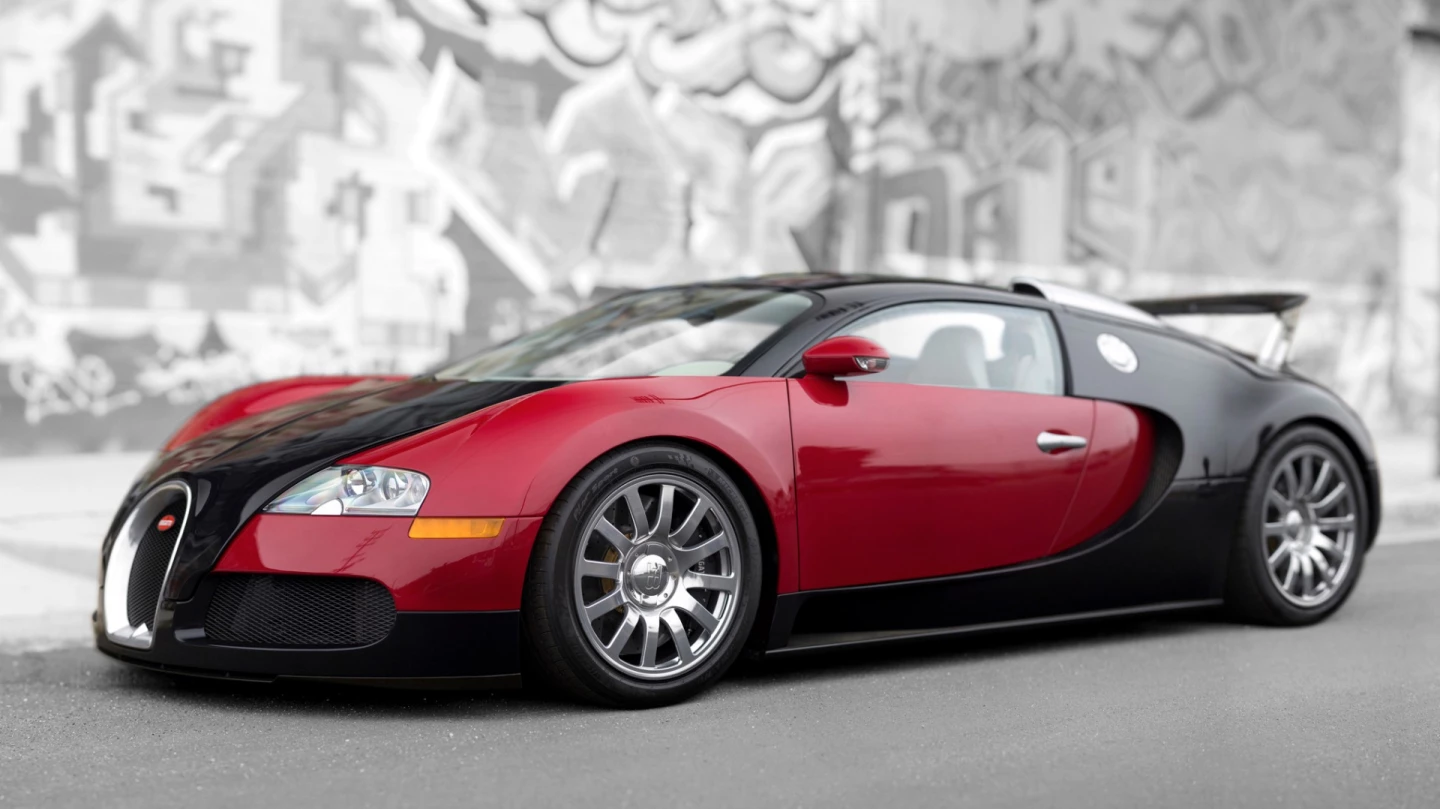
Volkswagen spent an extraordinary amount of money, time and effort creating the 254 mph (408 km/h), 1001 bhp Bugatti Veyron in 2005 – it knocked off the 240.7 mph (387.37 km/h) record set by Koenigsegg's CCR to become the fastest, most powerful and most expensive car ever built. Its story is well known, and the highest measured speed of a Bugatti Veyron 16.4 was 253.81 mph (408.47 km/h).
2007 | SSC Ultimate Aero TT | 256.15 mph (412.23 km/h)
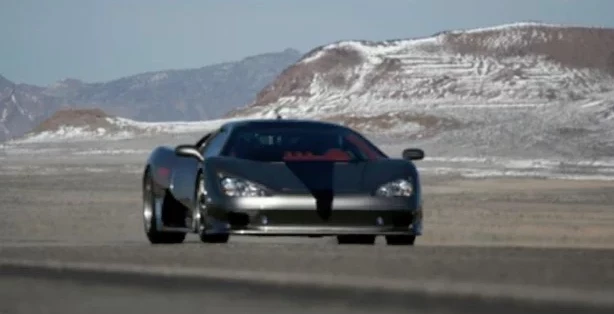
In September 2007, Shelby Supercars (SSC) broke the world record with its 1183 bhp, twin-turbo V8 Ultimate Aero TT. The first pass was recorded at 257.41 mph (414.31 km/h) and the second pass was recorded at 254.88 mph (410.24 km/h) in testing on a temporarily-closed two lane stretch of public highway in the company's home state of Washington for an average top speed of 256.15 mph (412.23 km/h).
2010 | Bugatti Veyron Super Sport | 267.8 mph (431.072 km/h)
The current official title holder

The 1,183-hp Bugatti Veyron 16.4 Super Sport raised the bar far higher one day in July 2010 with a speed of 267.8 mph (431.072 km/h). The most important thing to realize with the Super Sport is that it was substantially reengineered from the original Veyron to cope with the added speed – the extreme forces on an automobile do not rise in a linear fashion as speeds rise from 400 km/h to 430 km/h, and the Super Sport is indeed the climax of the Veyron series. It was not just a matter of squeezing an additional 200 bhp from the Veyron's 1001 bhp W16 motor but upgrading every aspect of the Veyron to ensure the vehicle continued to behave well in the new realm beyond 410 km/h. Our full story on the record can be found here.
In 2013 Guinness World Records finally released a statement confirming that the Bugatti holds the record: "Following a thorough review conducted with a number of external experts, Guinness World Records is pleased to announce the confirmation of Bugatti's record of Fastest production car achieved by the Veyron 16.4 Super Sport. The focus of the review was with respect to what may constitute a modification to a car's standard specification. Having evaluated all the necessary information, Guinness World Records is now satisfied that a change to the speed limiter does not alter the fundamental design of the car or its engine."
Despite several "paper threats" from the likes of Koenigsegg and Hennessey (see below), Bugatti has held that record ever since.
2013 | Hennessey Venom GT | 265.7 mph (428 km/h)

In April, 2013 the Hennessey Venom GThit the headlines with a265.7 mph (428 km/h) timed speed, bringing with it quite a controversy. The Hennessey Venom GT is manufactured by Texas-based Hennessey Performance Engineering, based on a heavily modified Lotus Exige chassis with massive American V8 muscle packed in.
Inside the Venom GT is a 90-degree, seven-liter V8 engine with twin precision ball bearing turbochargers, an iron block with aluminum heads, electronic sequential multi-port fuel injection pumping a terrifying 1,244 bhp (914 kW) and 1155 lb-ft (1565 Nm) of torque feeding into a Ricardo six-speed manual gearbox.
Hennessey claims a top speed of 278 mph (447.5 km/h) for the Venom GT, blaming a lack of suitably long and straight testing sites for the difference.
Hennessey claimed the run of 265.7 mph was the new record as the Bugatti record was invalid, with a quote from company founder John Hennessey explaining: "While a Veyron Super Sport did run 267.8 mph, Bugatti speed-limits its production vehicles to 258 mph," Hennessey's quote read. "Thus, at 265.7 mph the Venom GT is the fastest hypercar available to the public."
2014 | Hennessey Venom GT | 270.49 mph (435.3 km/h)

On 14 February 2014, Hennessey went record hunting with the Venom GT again, this time on the 3.2-mile Space Shuttle landing runway at Kennedy Space Center in Florida. A one-way speed of 270.49 mph(435.31 km/h) was achieved but Hennessy couldn't claim the record because that requires making two runs in opposite directions within an hour, and NASA wouldn't allow it.
2017 | Koenigsegg Agera RS | 277.87 mph (446.97 km/h)
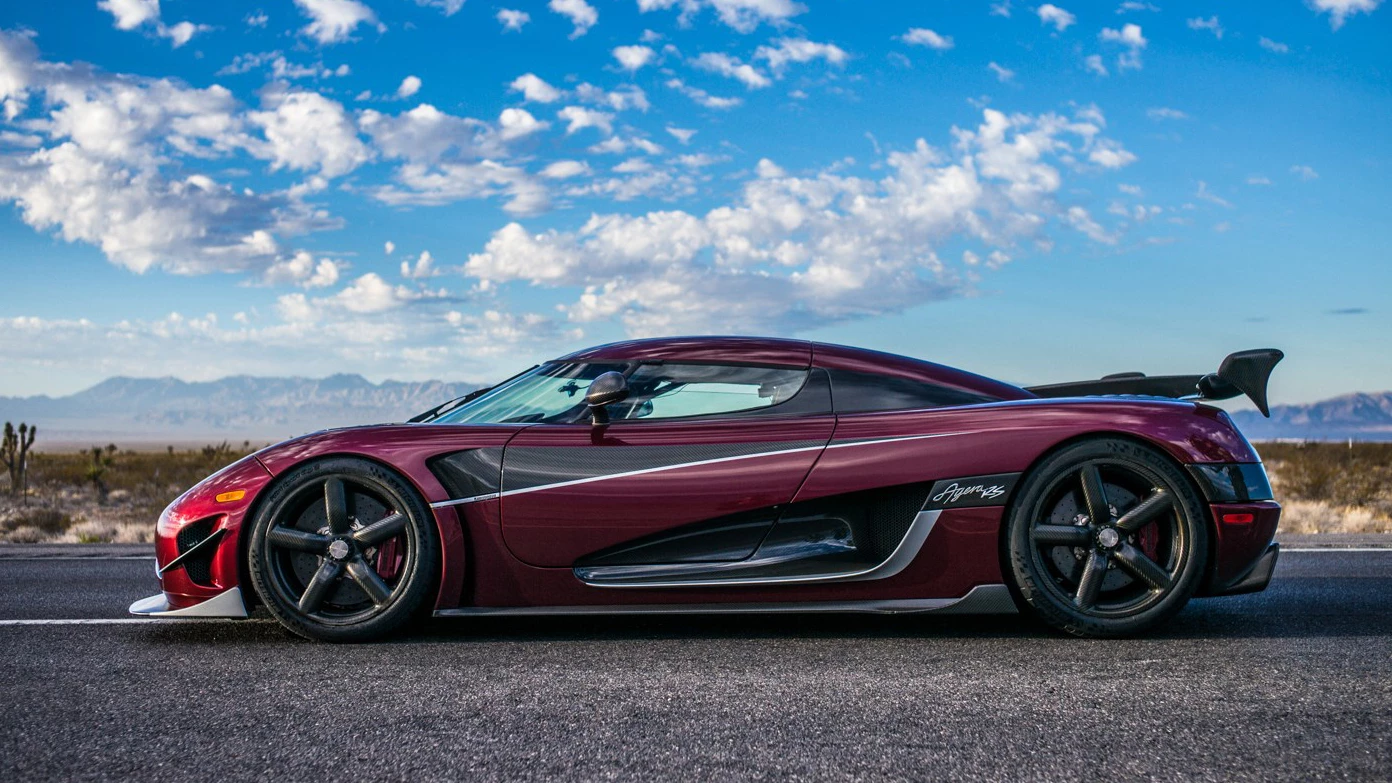
On November 4, 2017, Koenigsegg used a customer-owned Agera RS fitted with a standard 1MW engine upgrade (for a total 1,360 hp) and running on E85 fuel for a two-way average speed of 277.87 mph (446.97 km/h) on a closed public highway in Nevada, USA.
The highest speed on a public road
During the Koenigsegg Agera RS record run, the highest speed ever recorded on a public road was achieved at 284.55 mph (457.49 km/h), breaking an 80-year-old record set by Mercedes Benz on the January 28, 1938.

That 432.7 km/h (268 mph) record was established by the legendary Rudolf Caracciola in a highly modified Mercedes W125 Grand Prix car (a special 725 hp V12 engine replaced the usual V8 racing engine) on a closed stretch of autobahn between Frankfurt and Dormstadt in Germany. Highlighting the dangers of top speed runs, Auto Union (now Audi) driver Bernd Rosemeyer died later that day attempting to claim the record for Auto Union.
Where to from here?
In 70 years, the top speed of the fastest production car in the world has progressed from 104.65 mph (169 km/h) to 277.87 mph (446.97 km/h), an increase of 164 percent.
Indeed, just 15 years ago when NewAtlas (nee Gizmag.com) was first published, we were writing about the coming of the W16 Bugatti Veyron, a hypercar with a then unprecedented 1001 hp which finally became available to the public in 2005. Now, we're awaiting the release of the 5000 hp Devel Sixteen road car.
The progression of speeds charts the rise of automotive science, as is evidenced by the considerable reengineering of the Veyron in its evolution from 16.4 to SuperSport discussed above. The fearsome speed record for a production has now exceeded that of Shanghai's Maglev train, and if you've ever had the pleasure of watching Mother Earth flash past at that speed from the Maglev, you will appreciate exactly what I'm referring to.

Scenery becomes blurred. Whole carriages twitch disconcertingly quickly and you become aware of the frightening wind roar outside that even the magnificently-engineered levitating projectile cannot disguise. It's more than 100 km/h faster than the current state-of-the-art 255 bhp MotoGP bikes of Marquez, Dovizioso and Rossi. Indeed, it's a speed you never see on any racetrack because the straights on a racetrack are not long enough.
All this to build a car that can travel at four times the speed limit on public roads might seem like madness to some. To others, achieving this speed is their quest in life, and owning one of these cars that made history in a significant way is their dream. With that in mind, we expect to be adding to this list in coming years. Madness it may be, but it's equally fascinating to watch these limits being pushed.
That wraps up out look at the speed demons of the modern era. For a trip back to where it all began, check out our feature on The fastest cars in history: 1894 to 1914.










